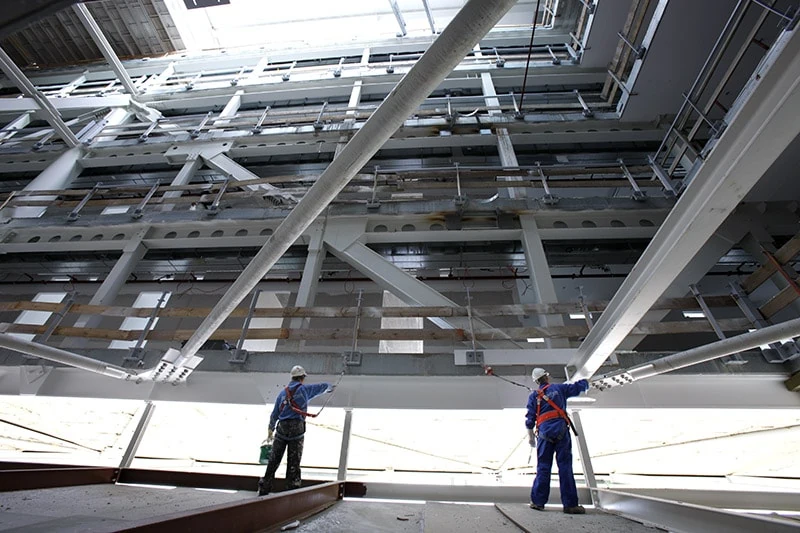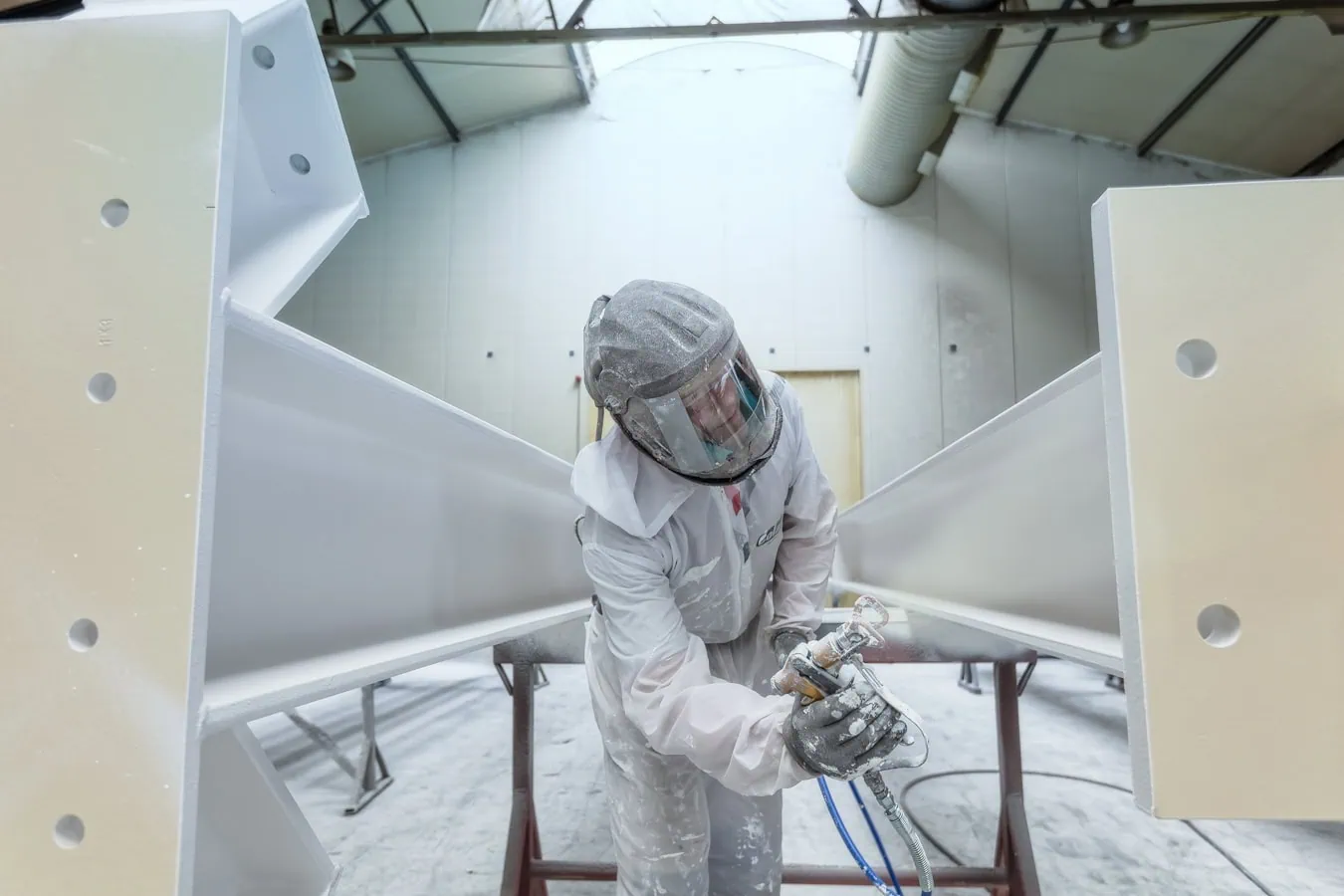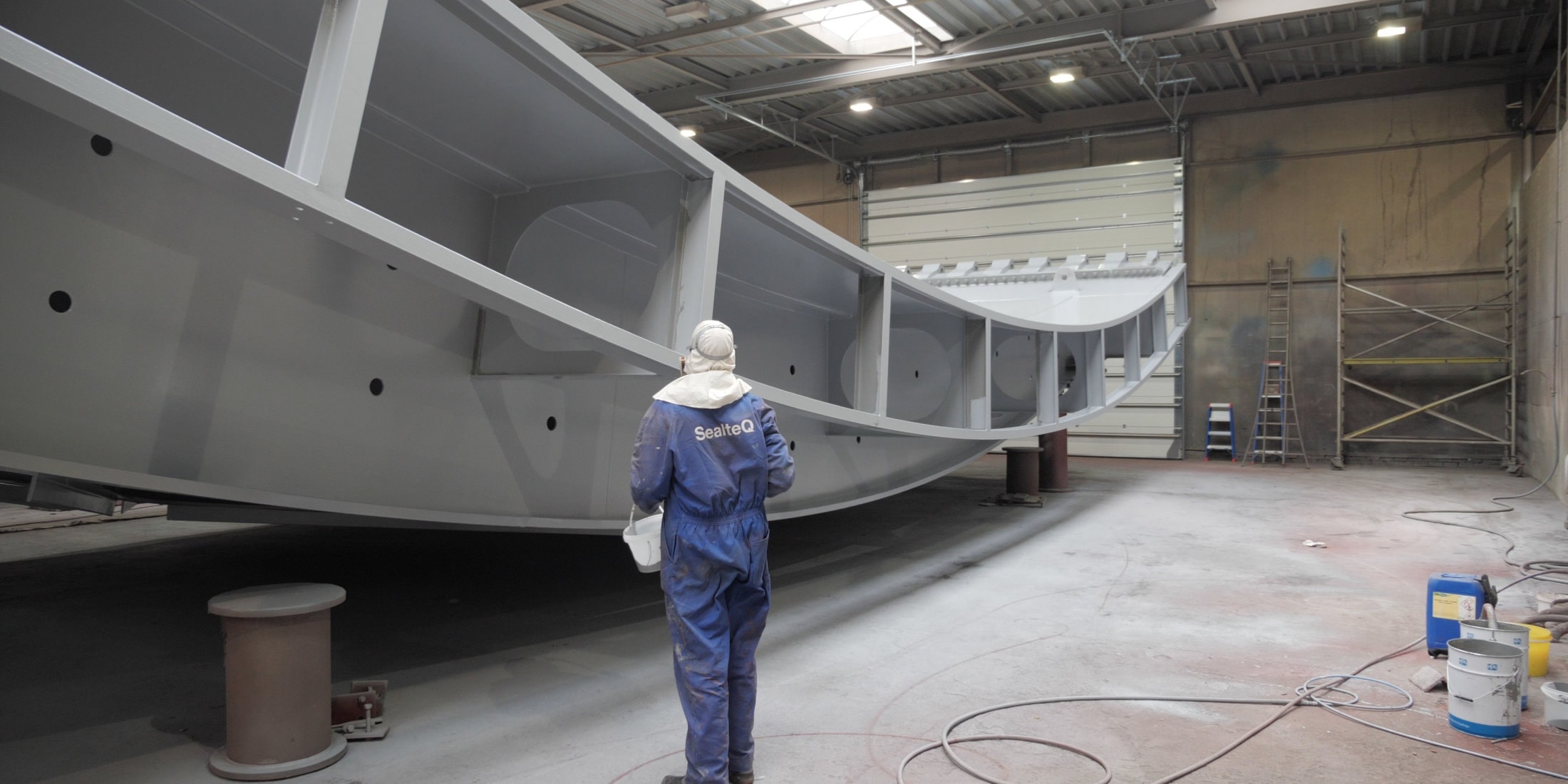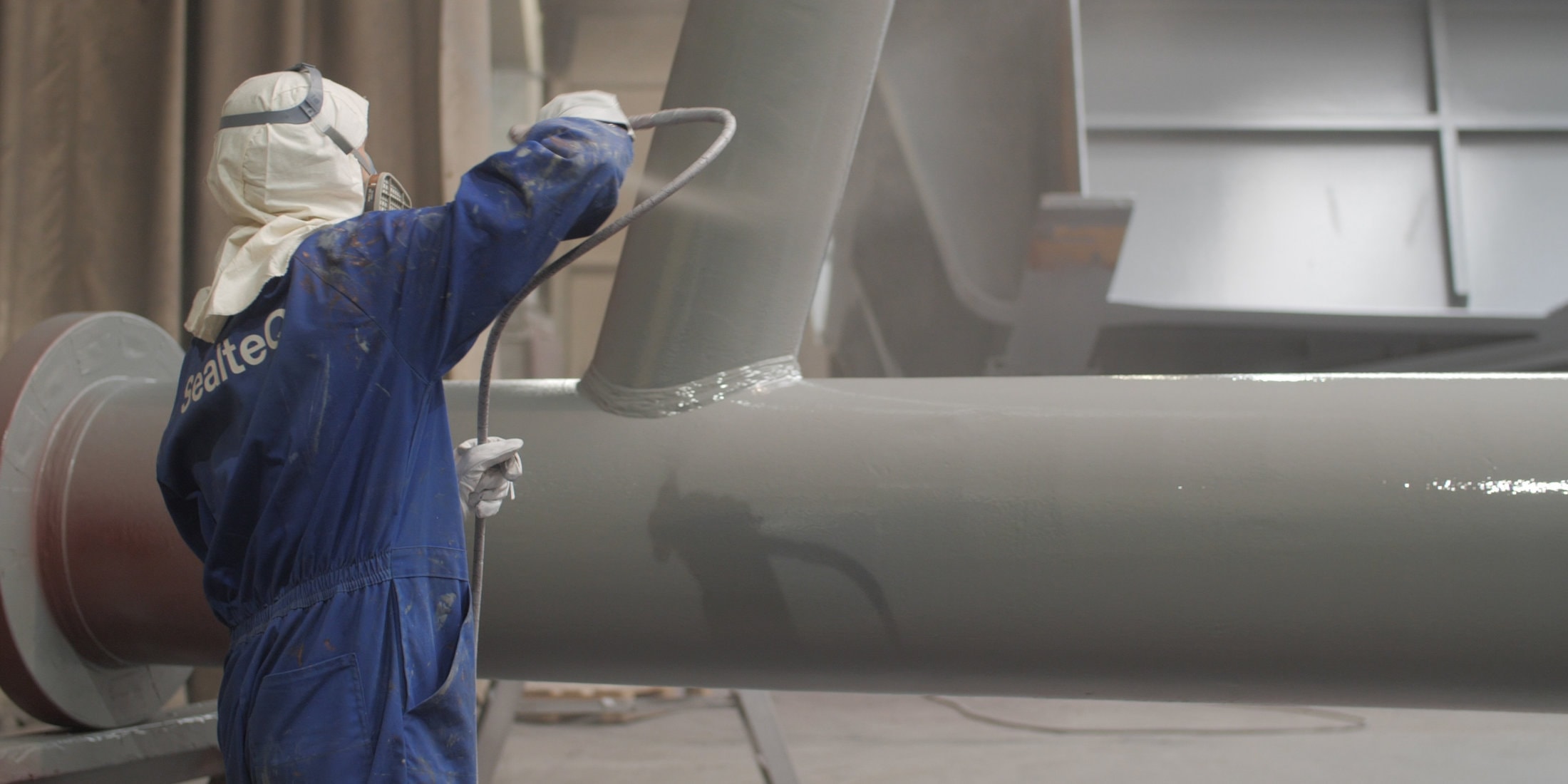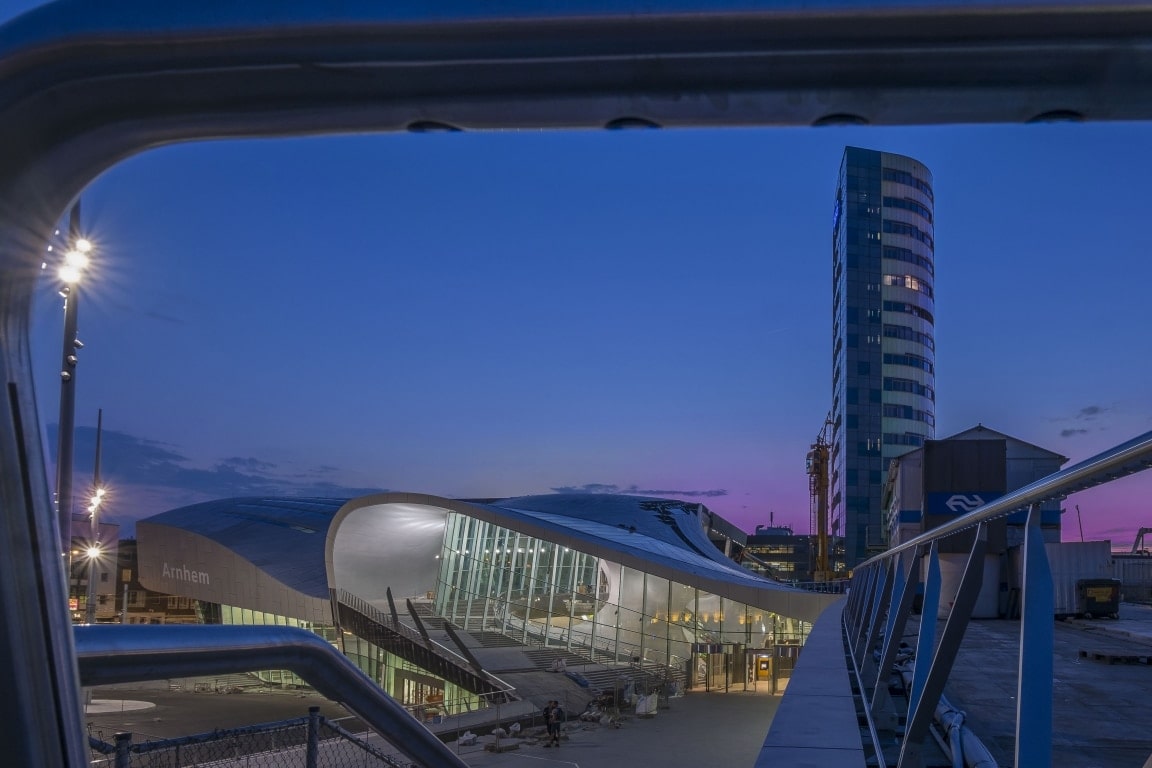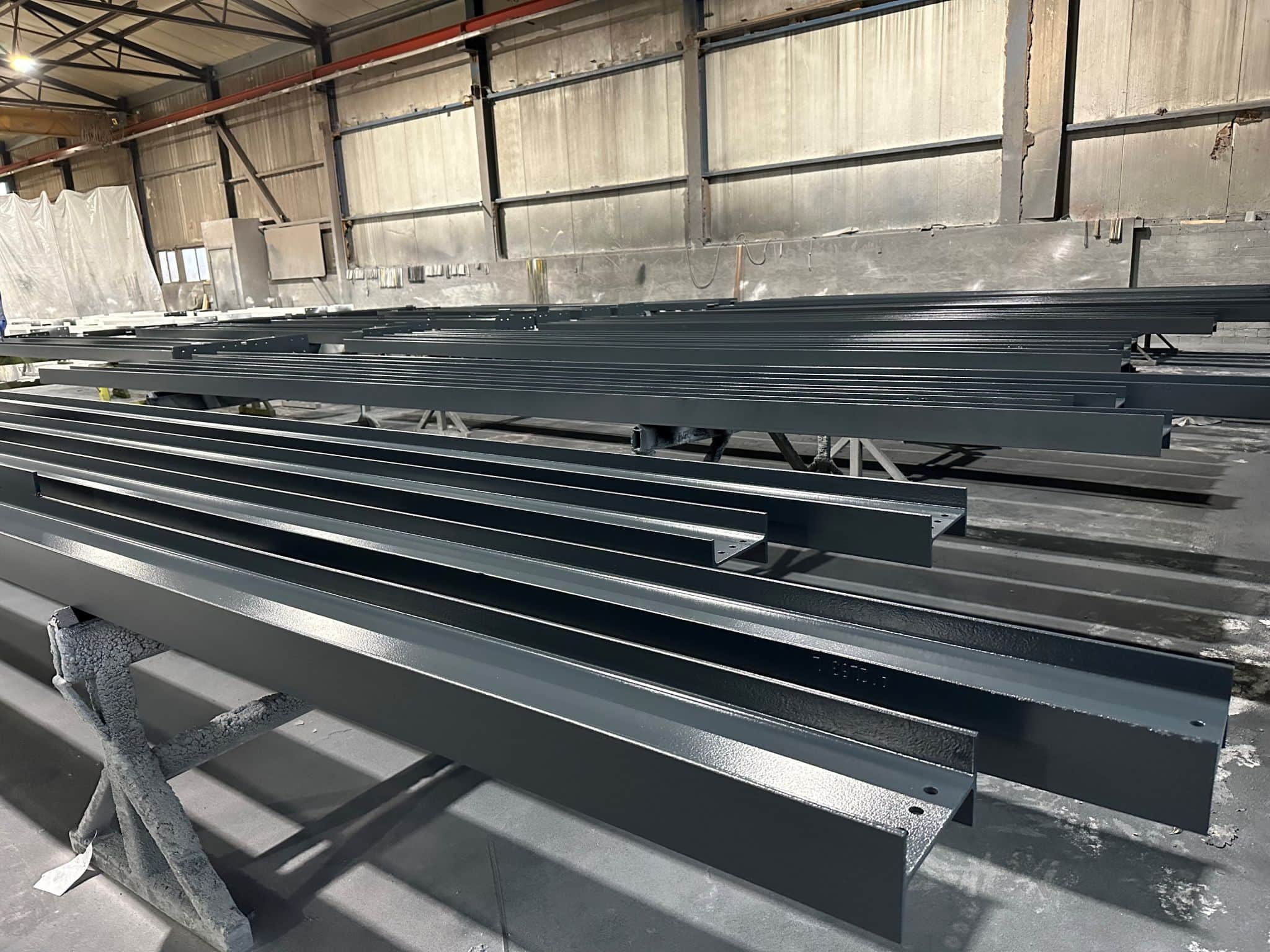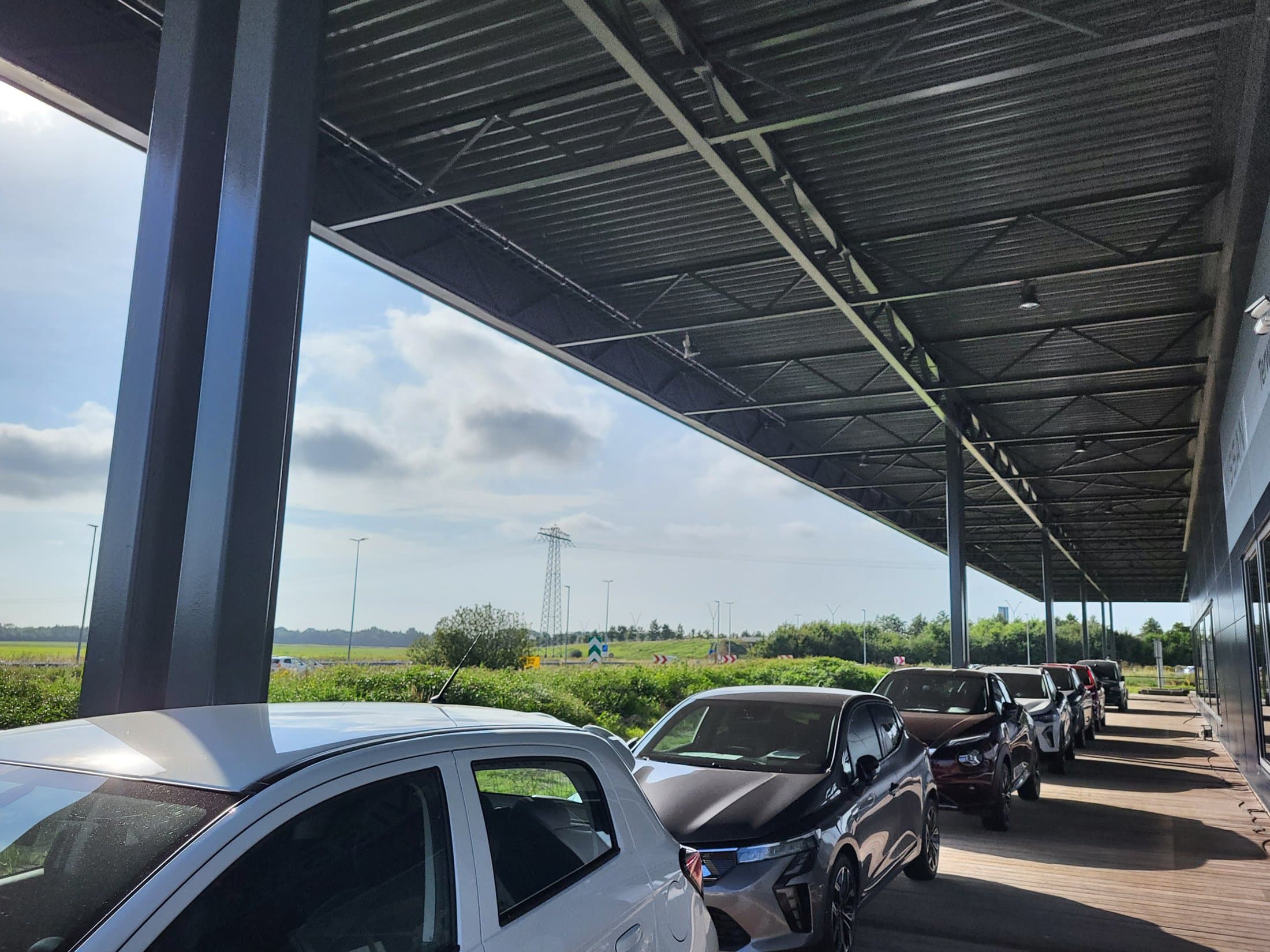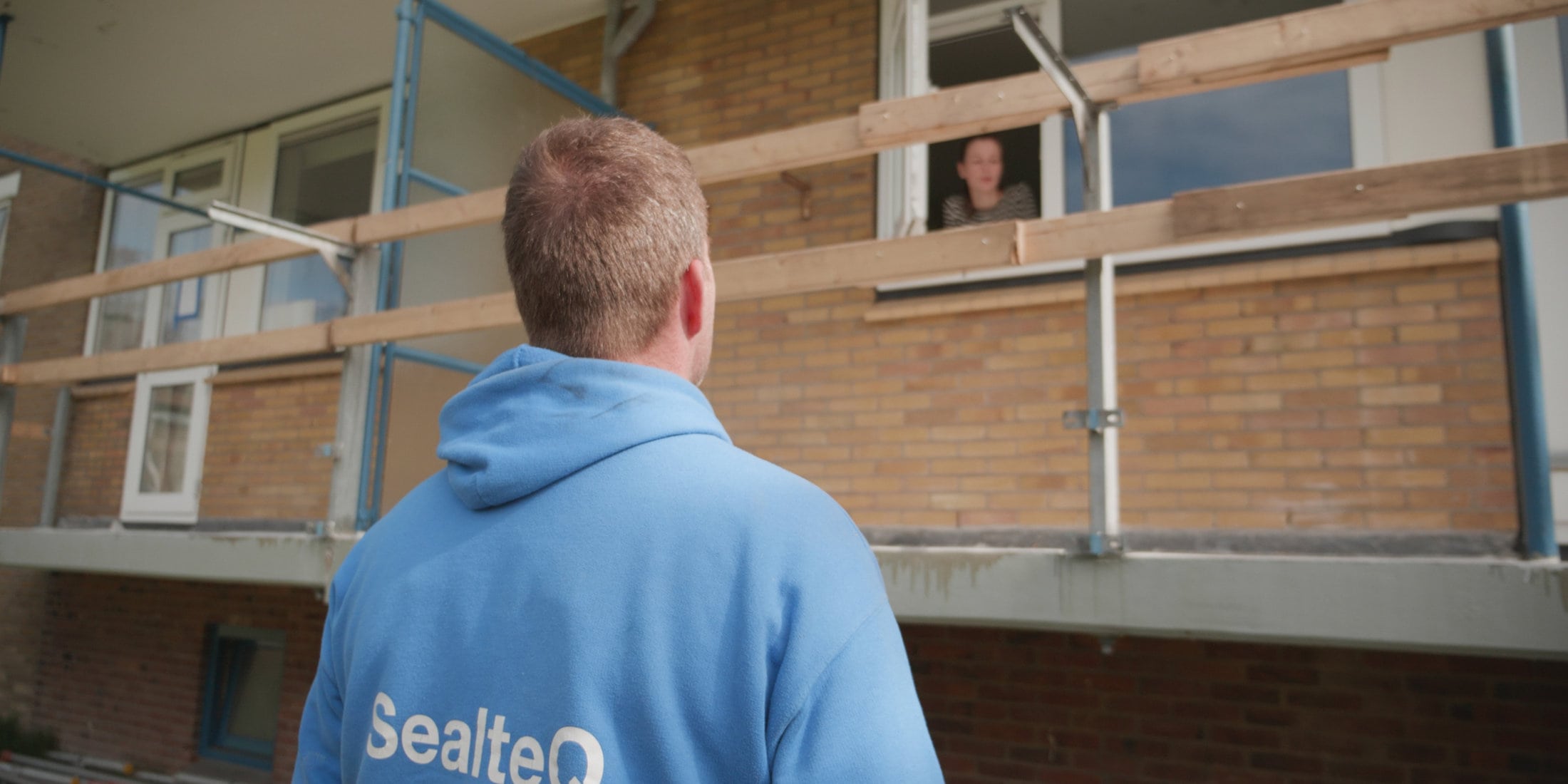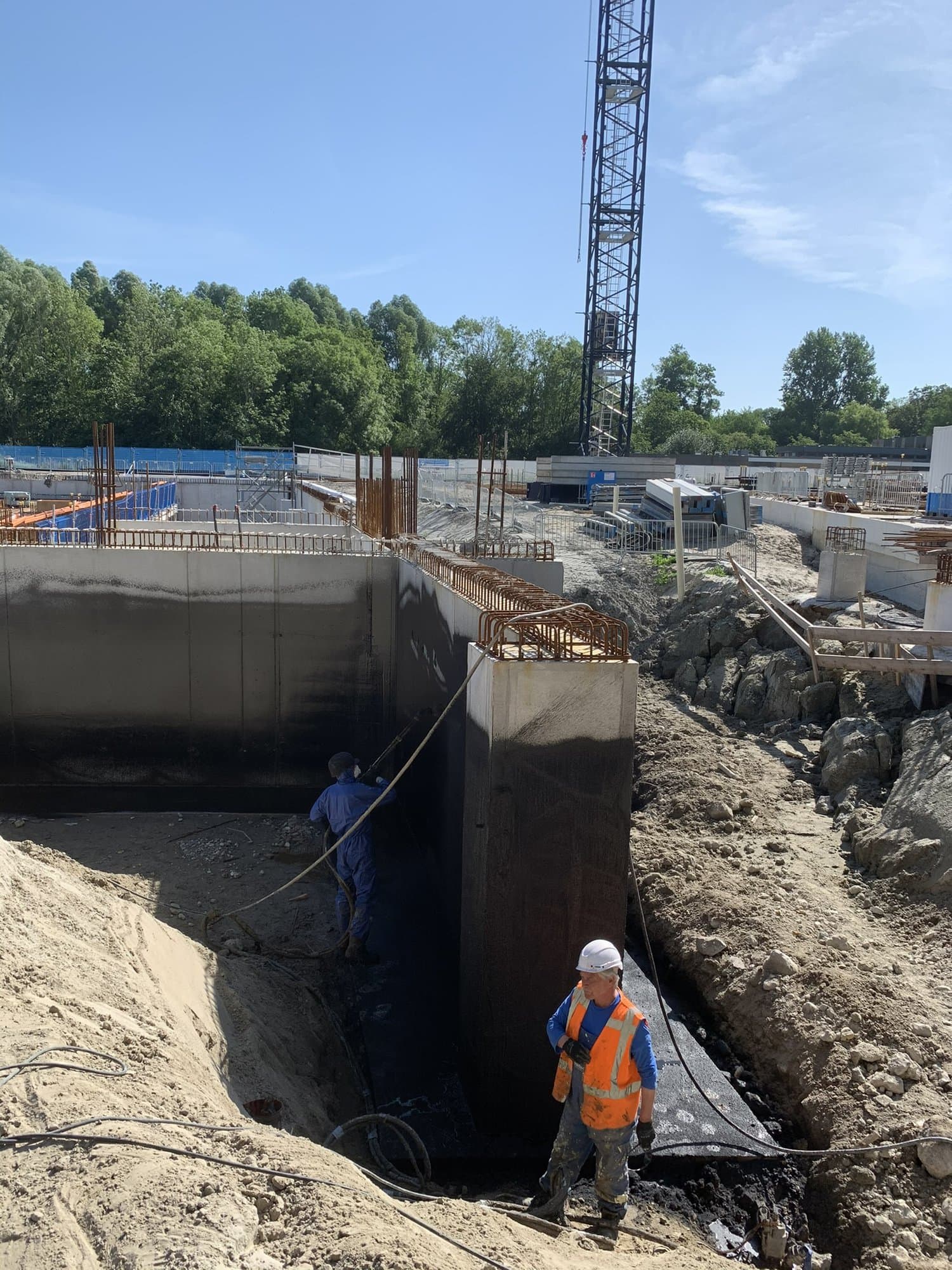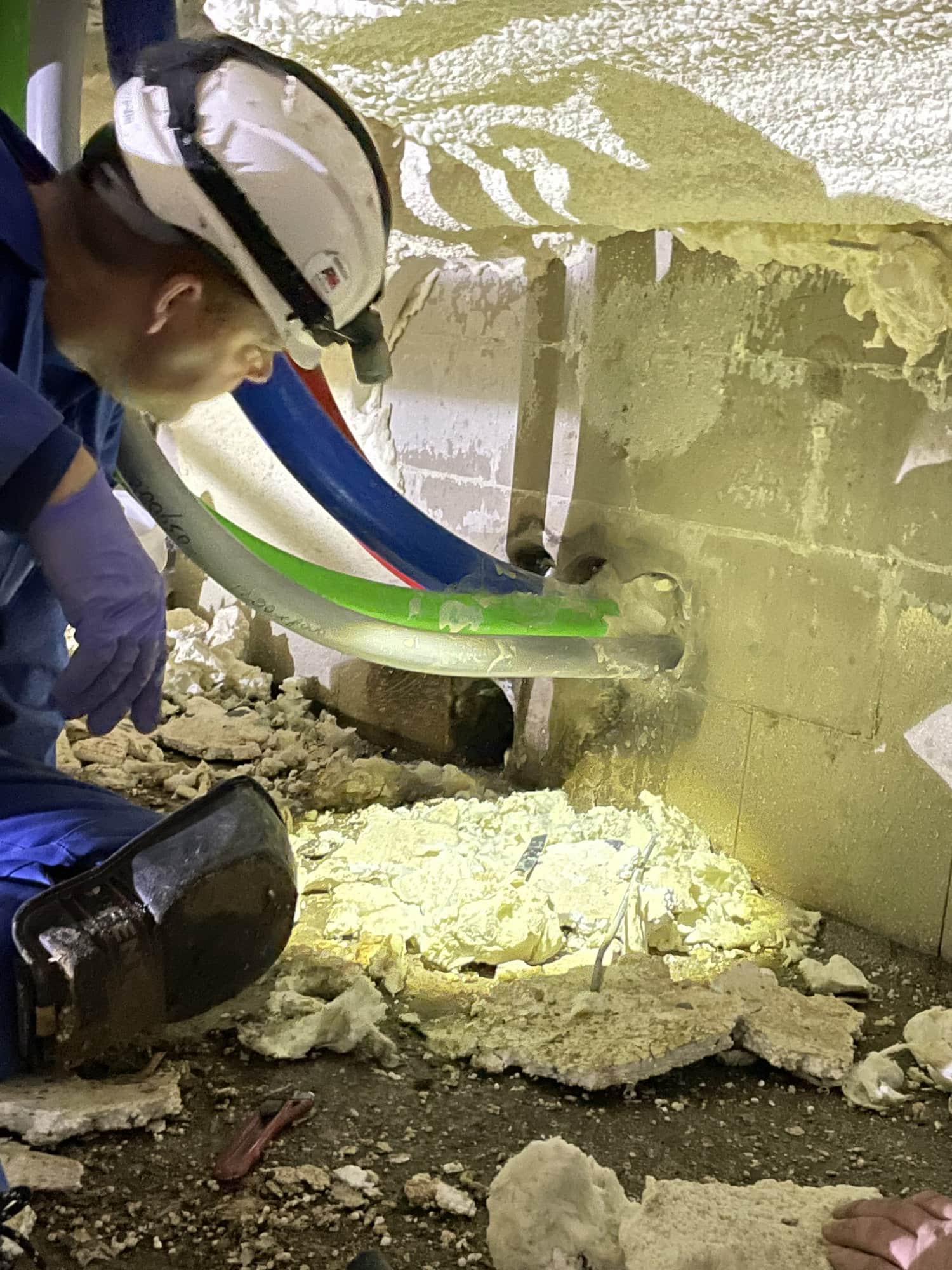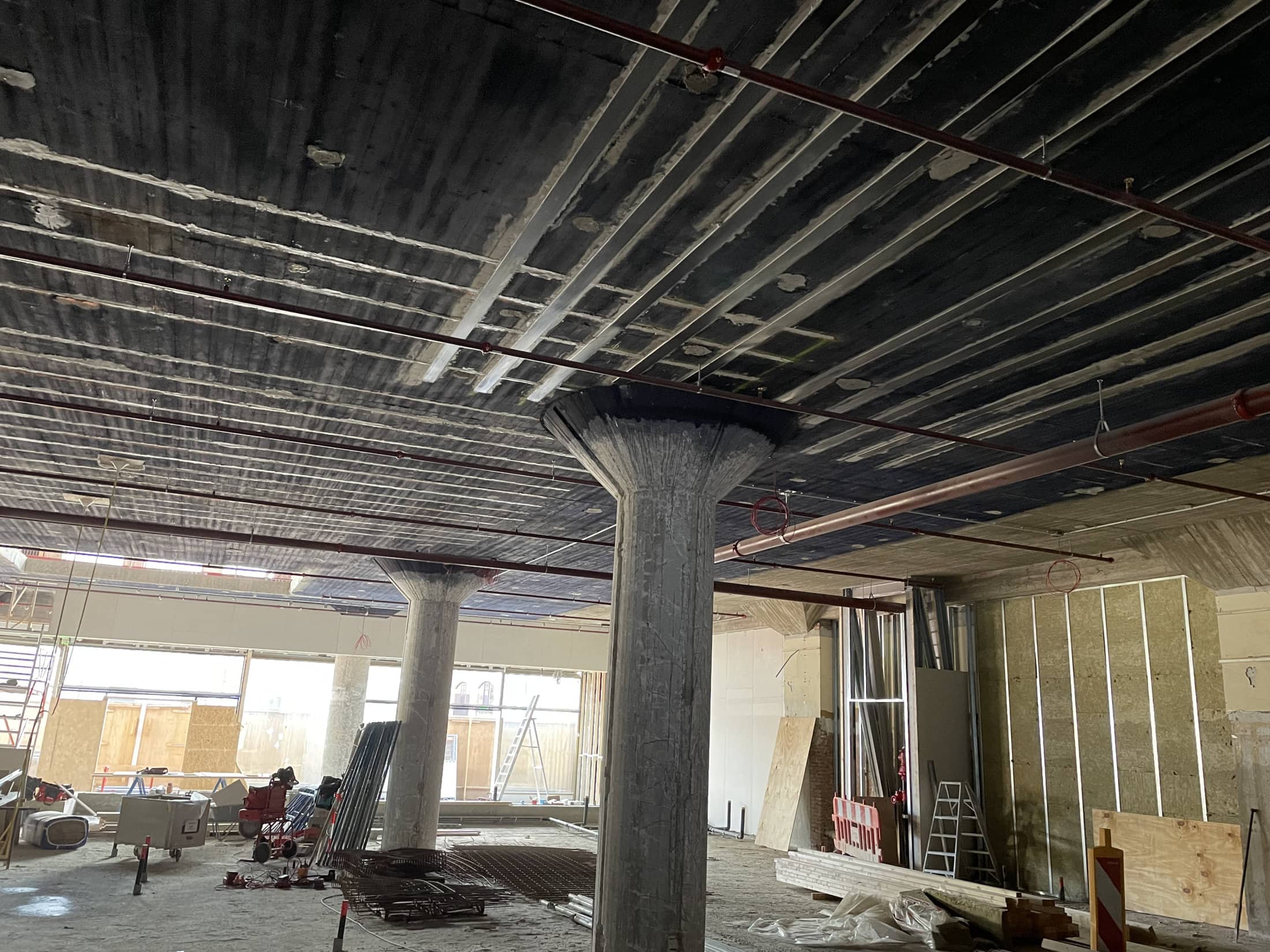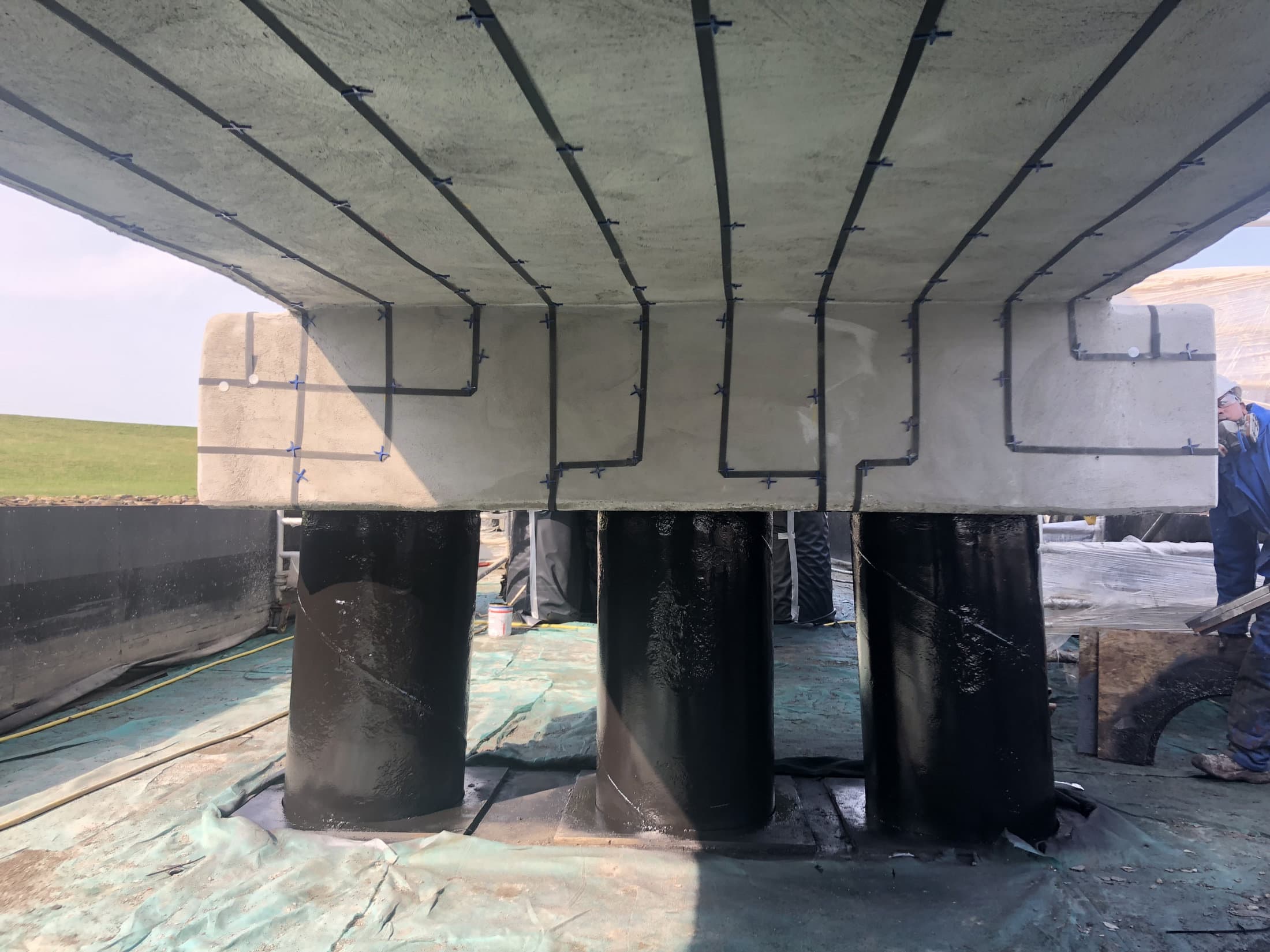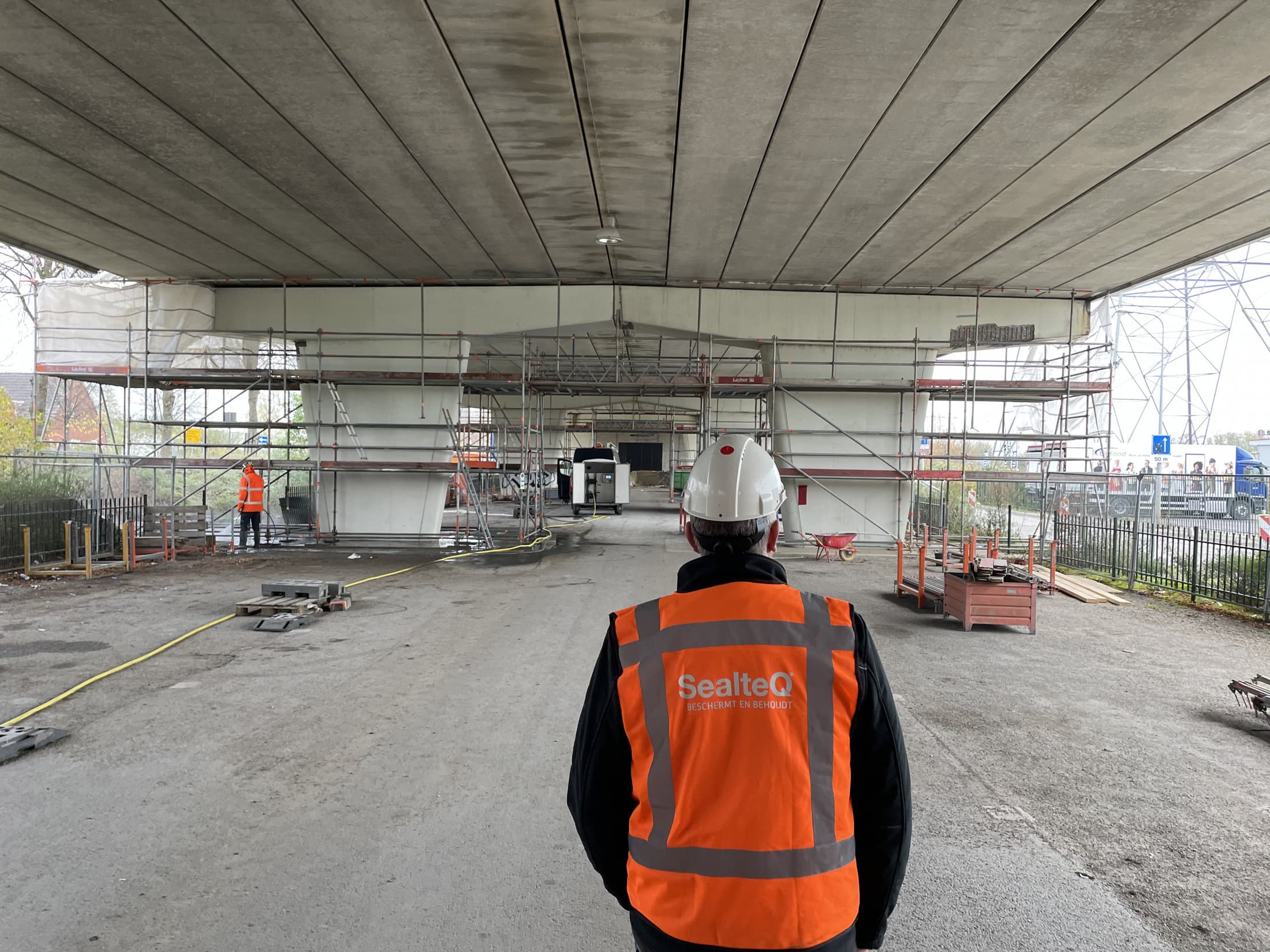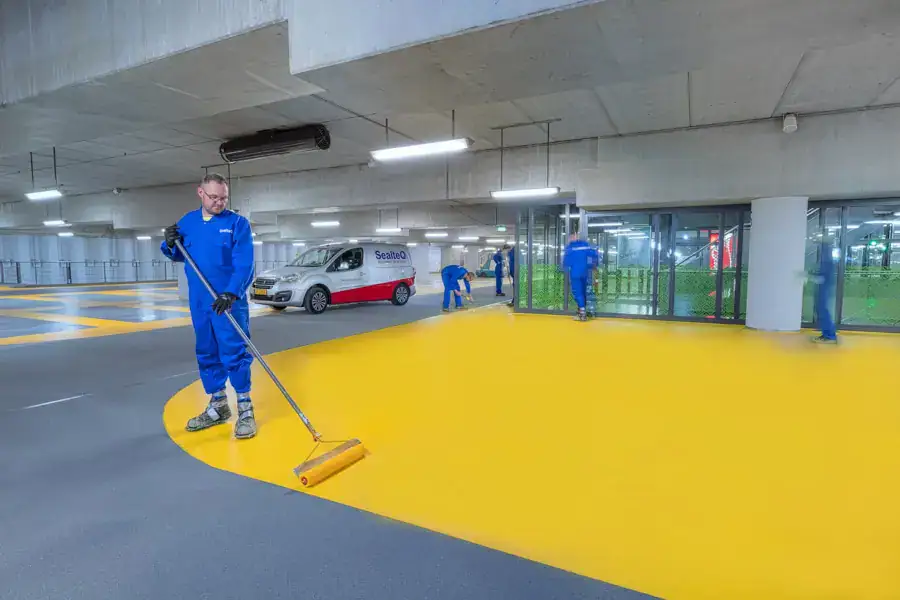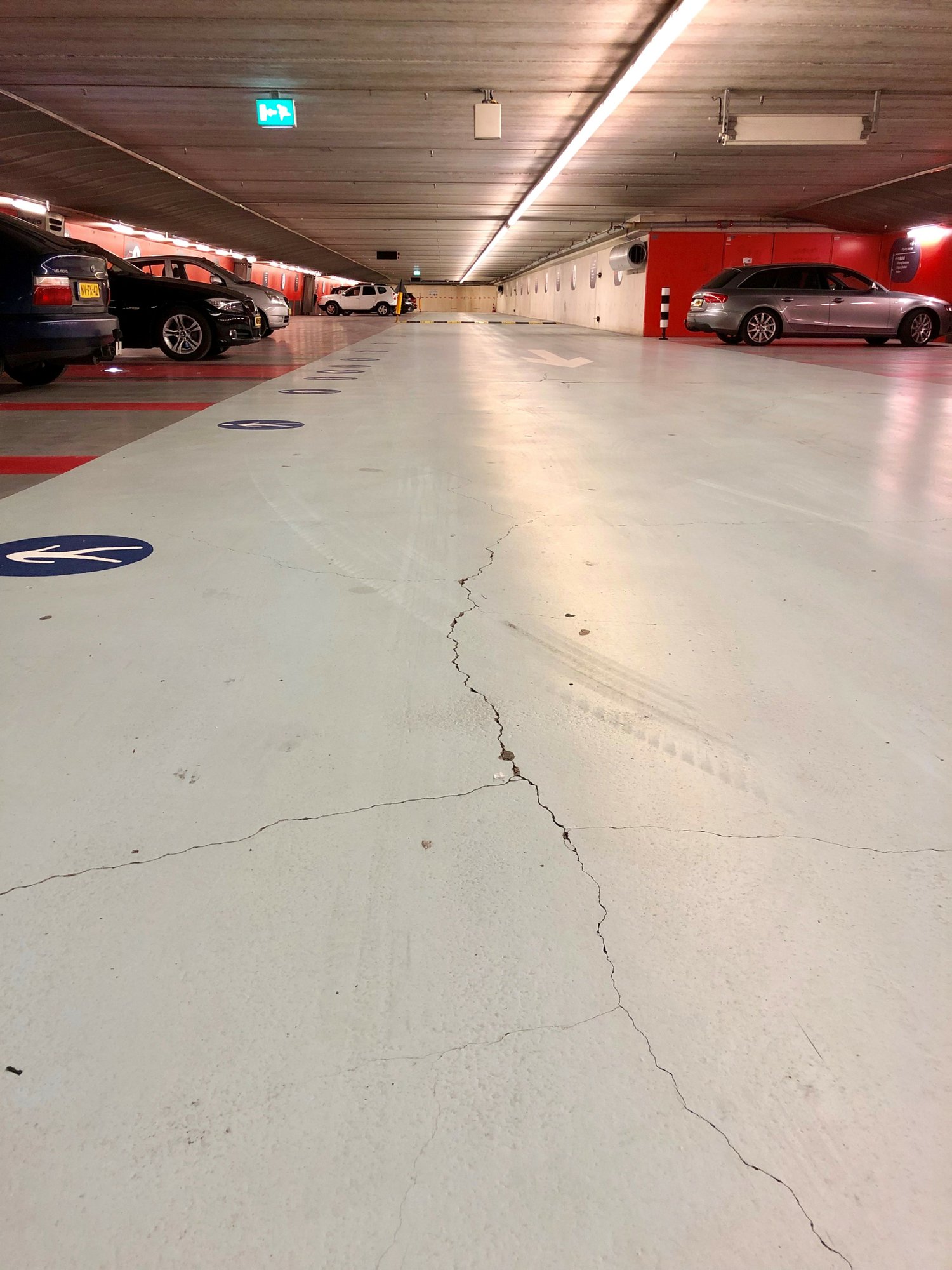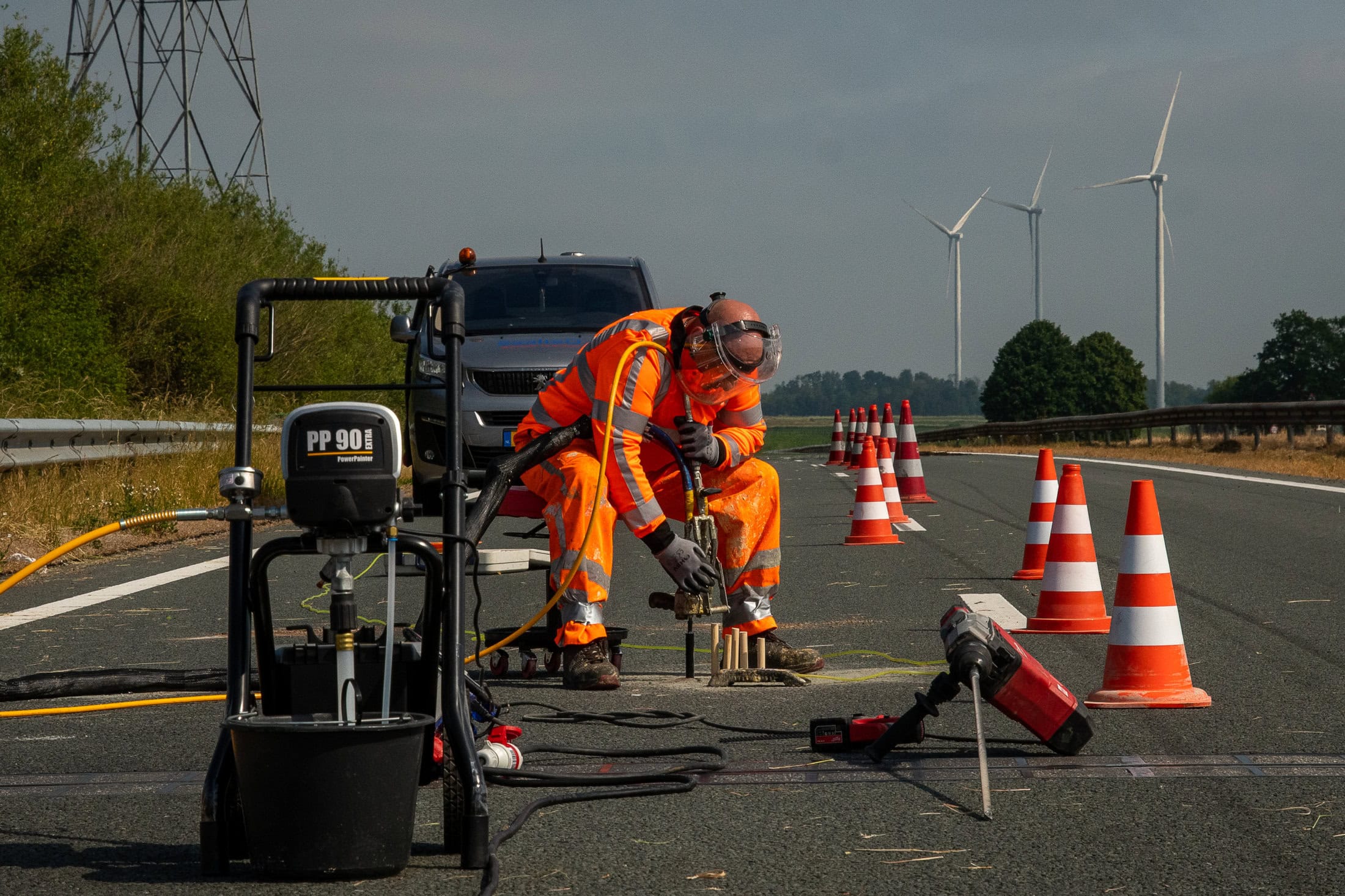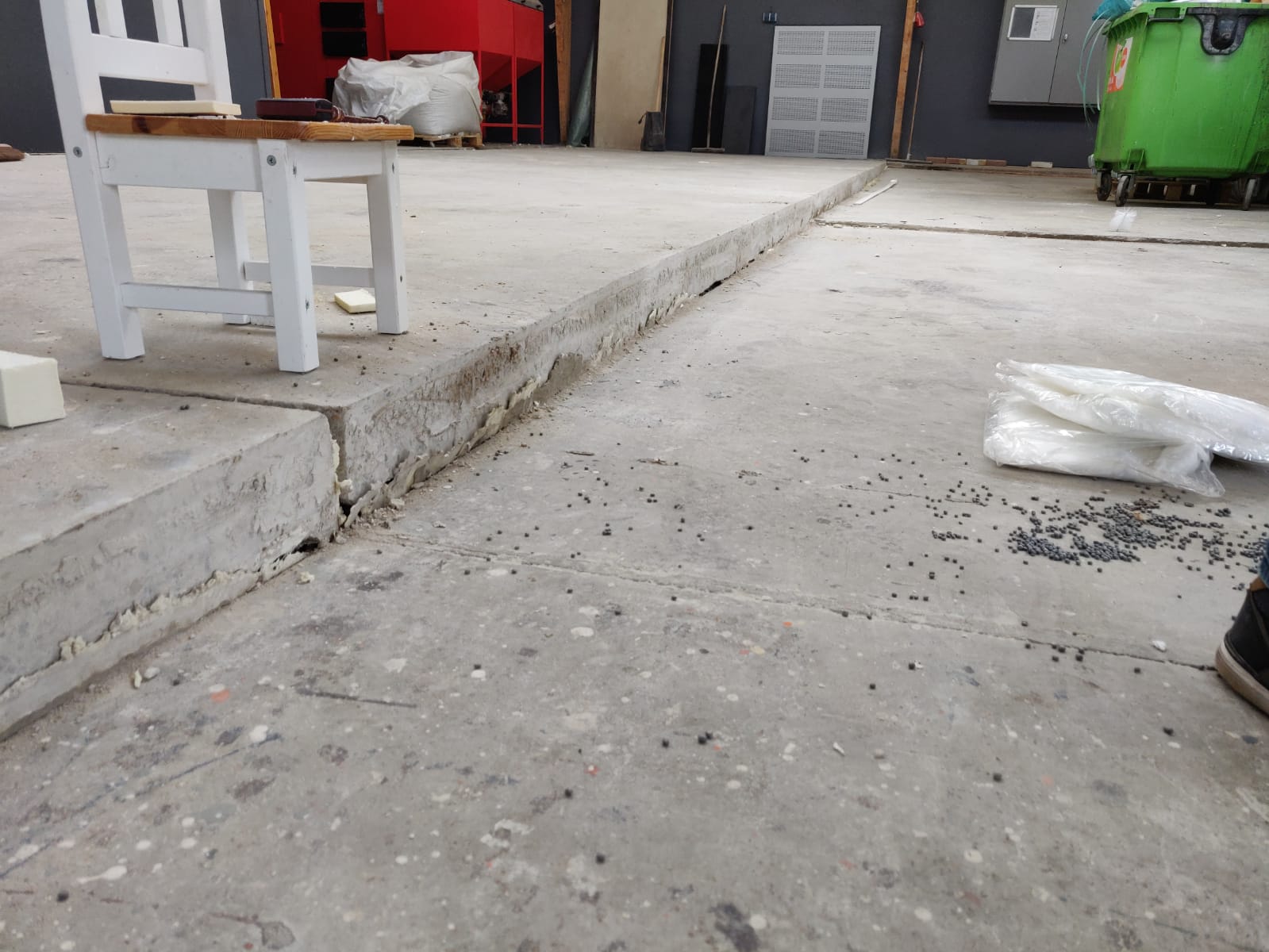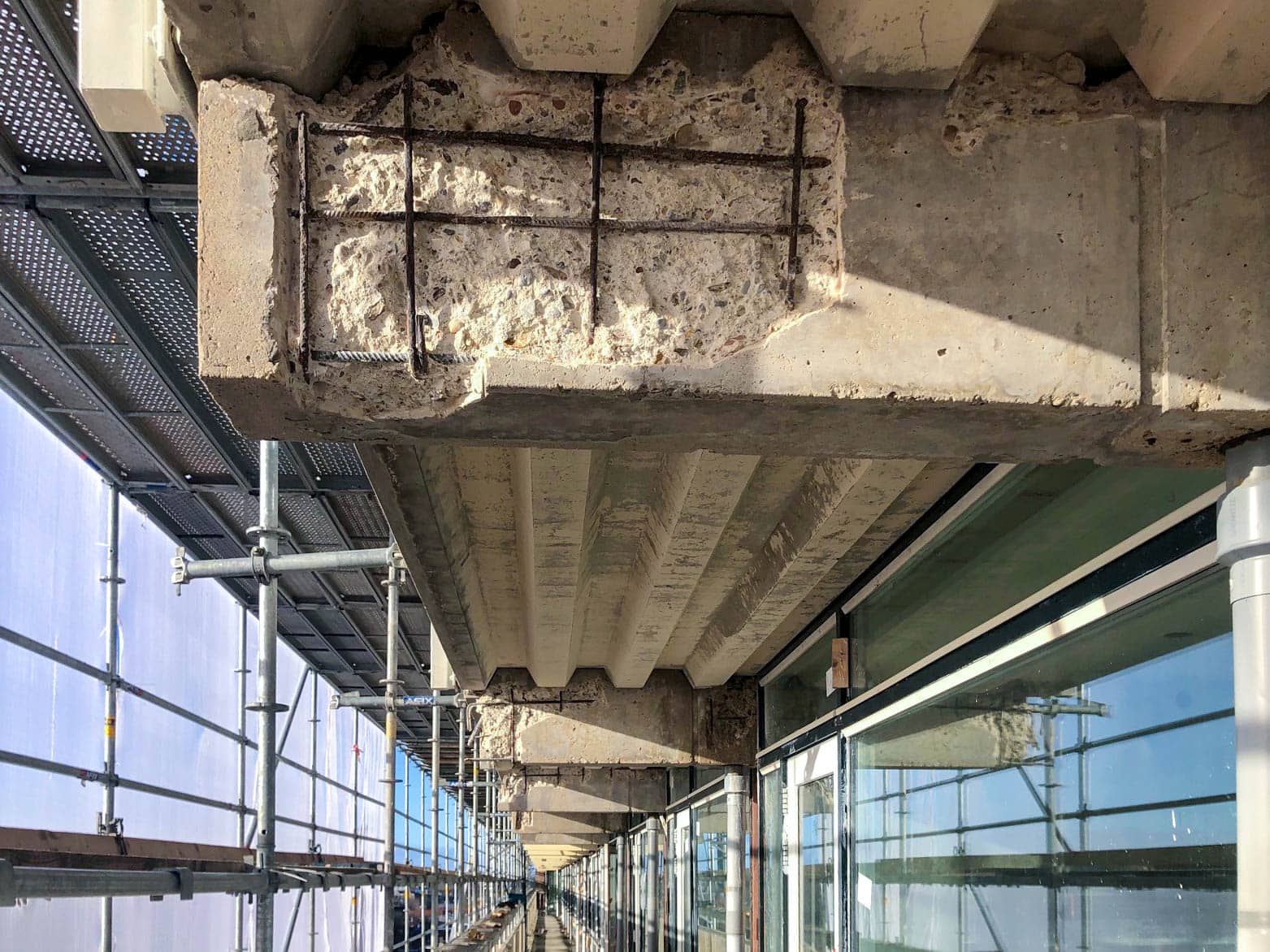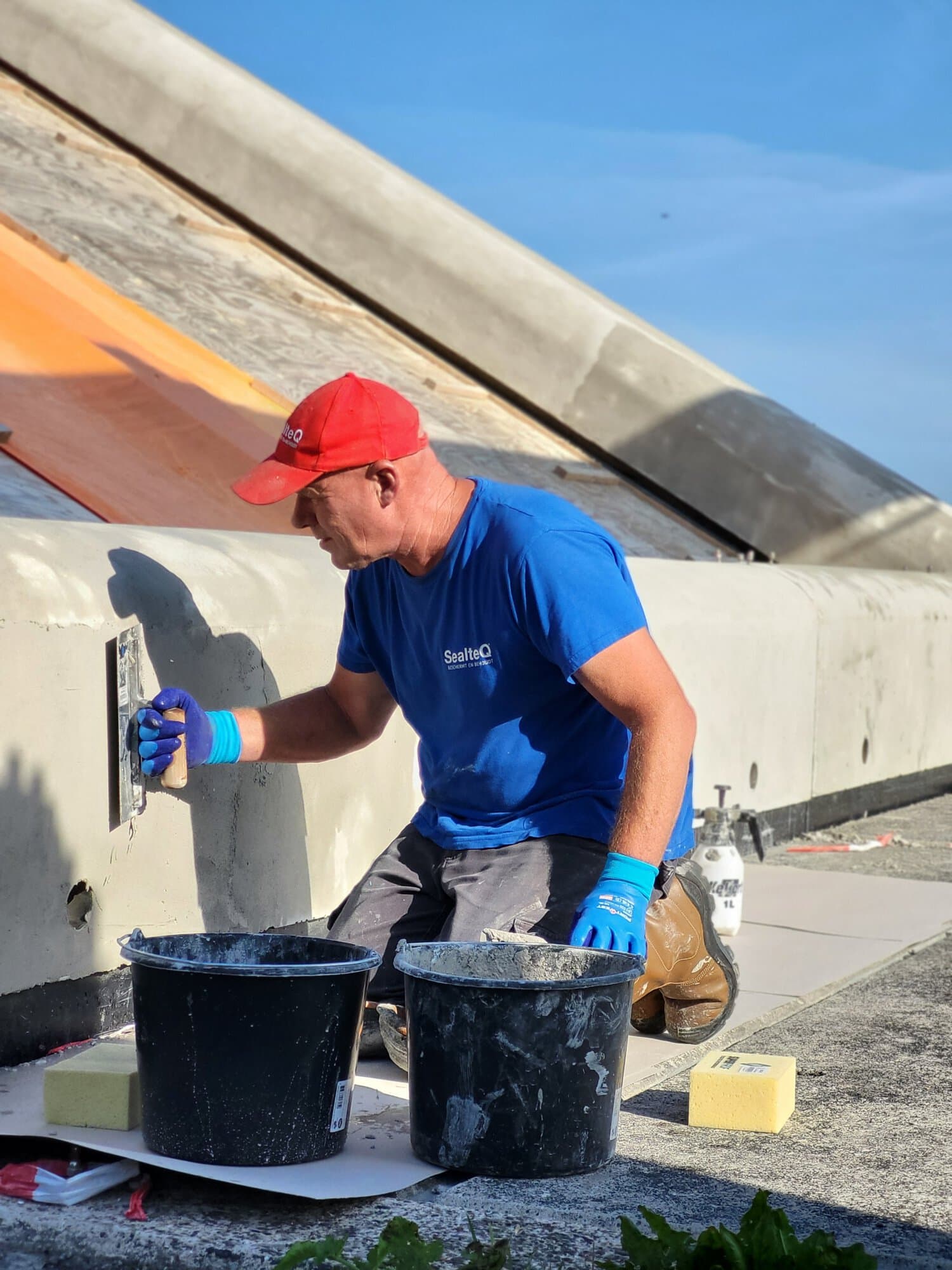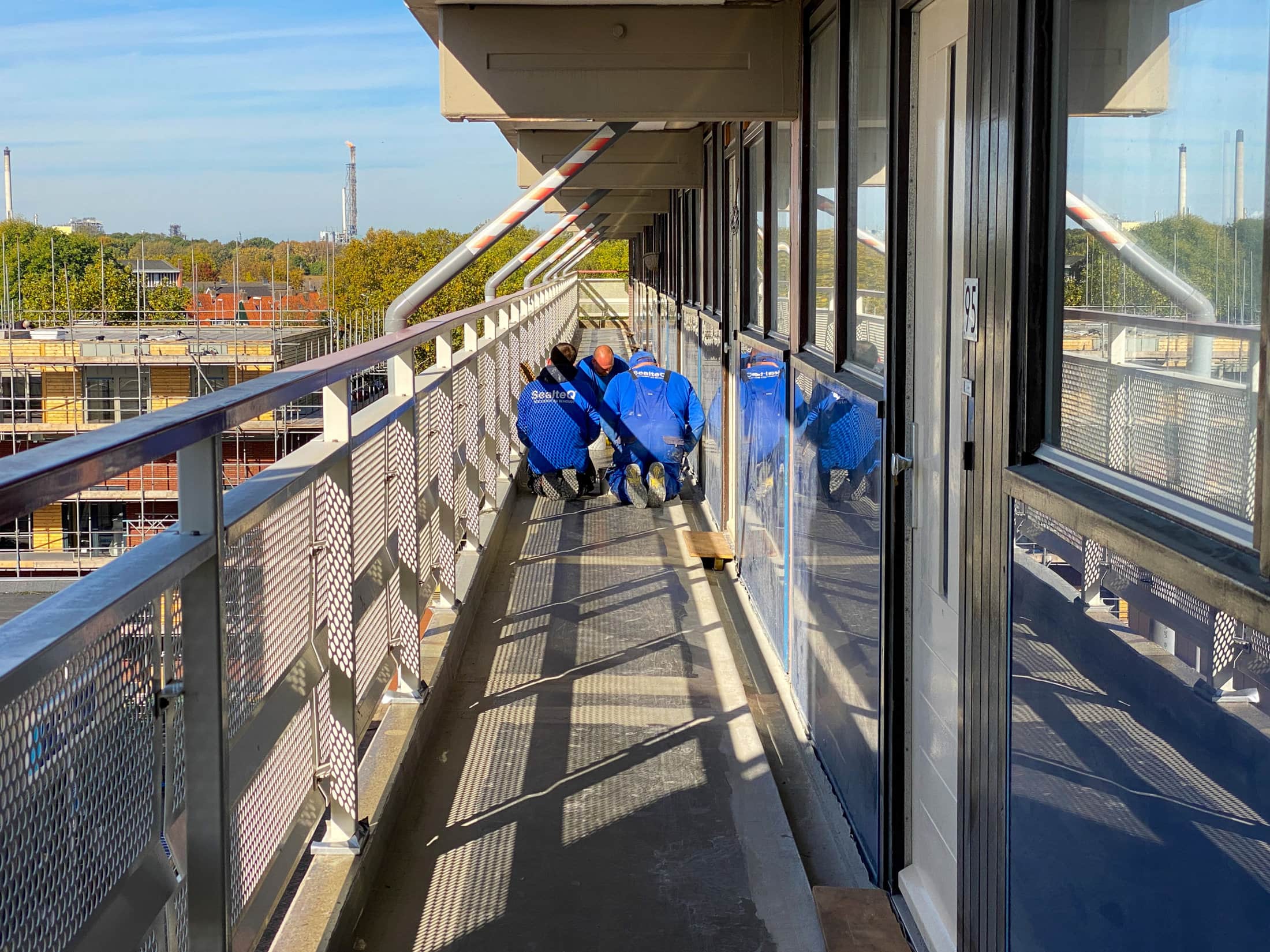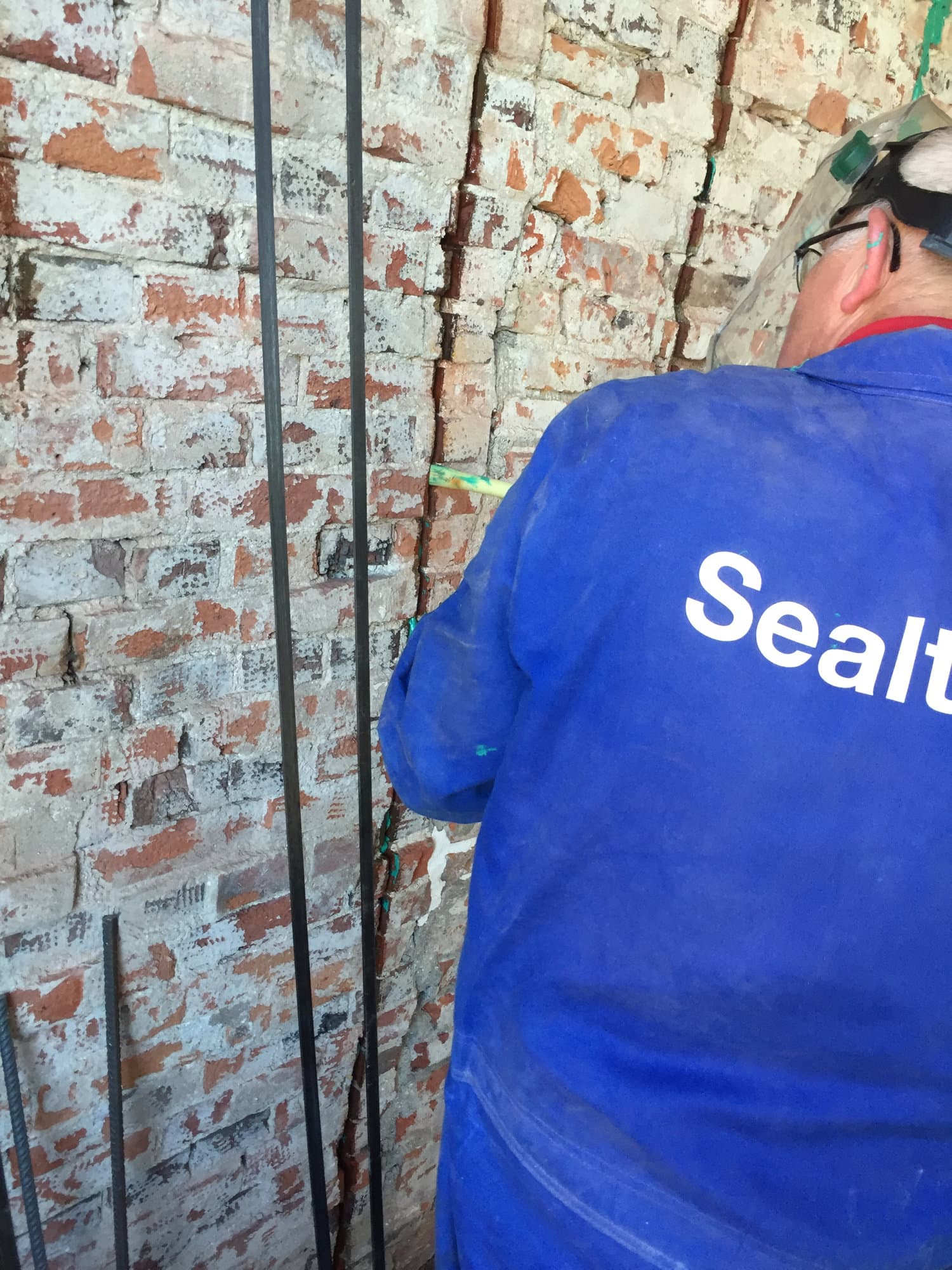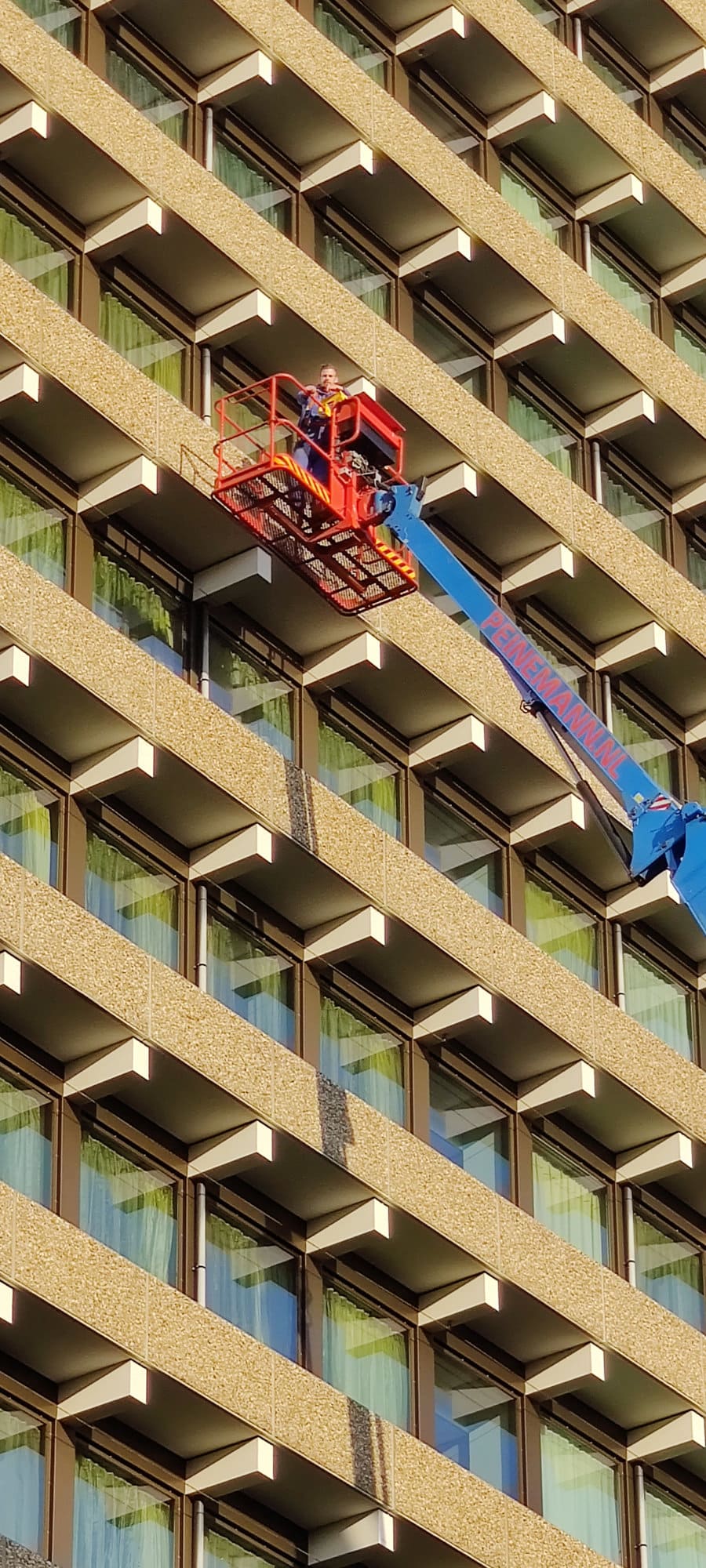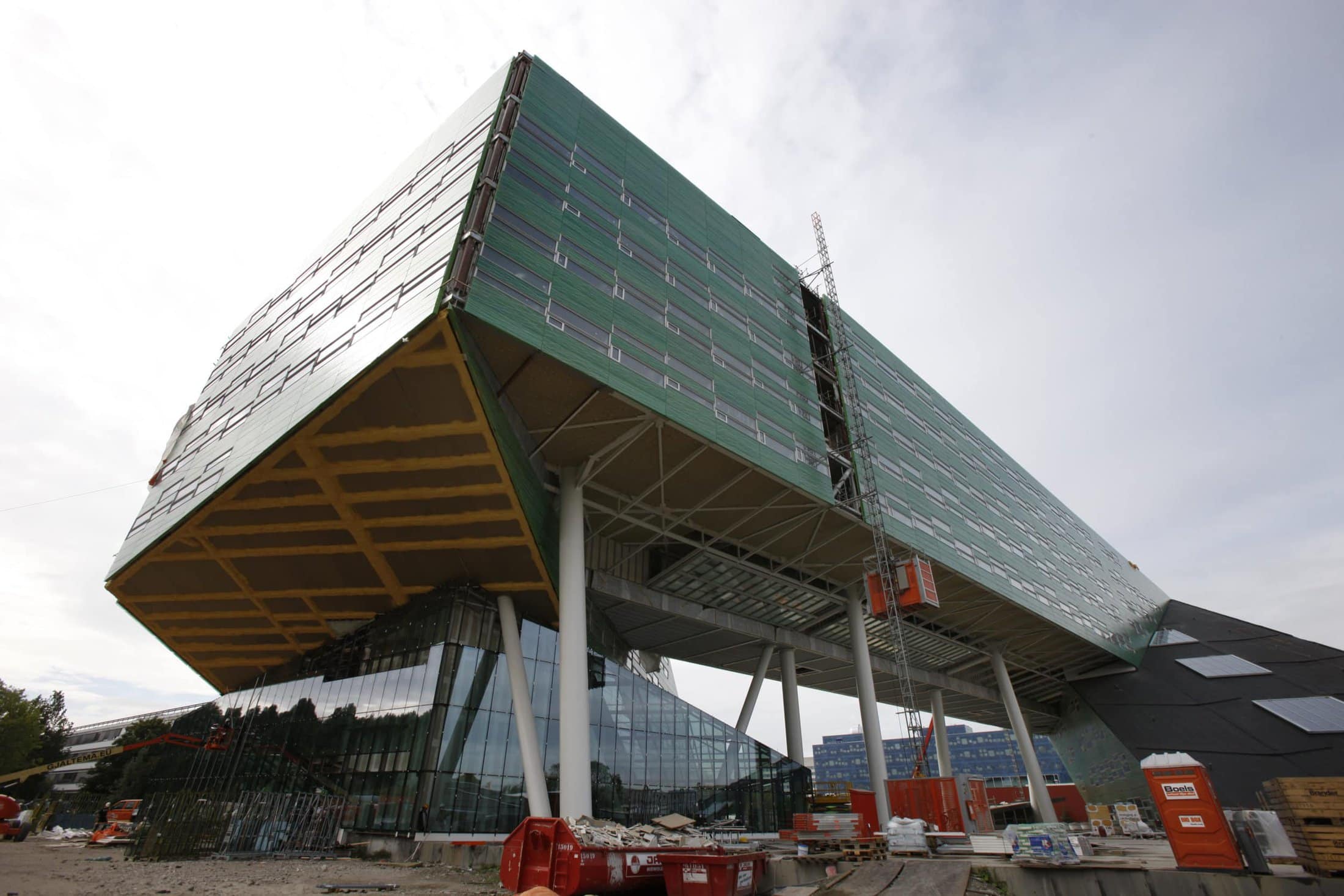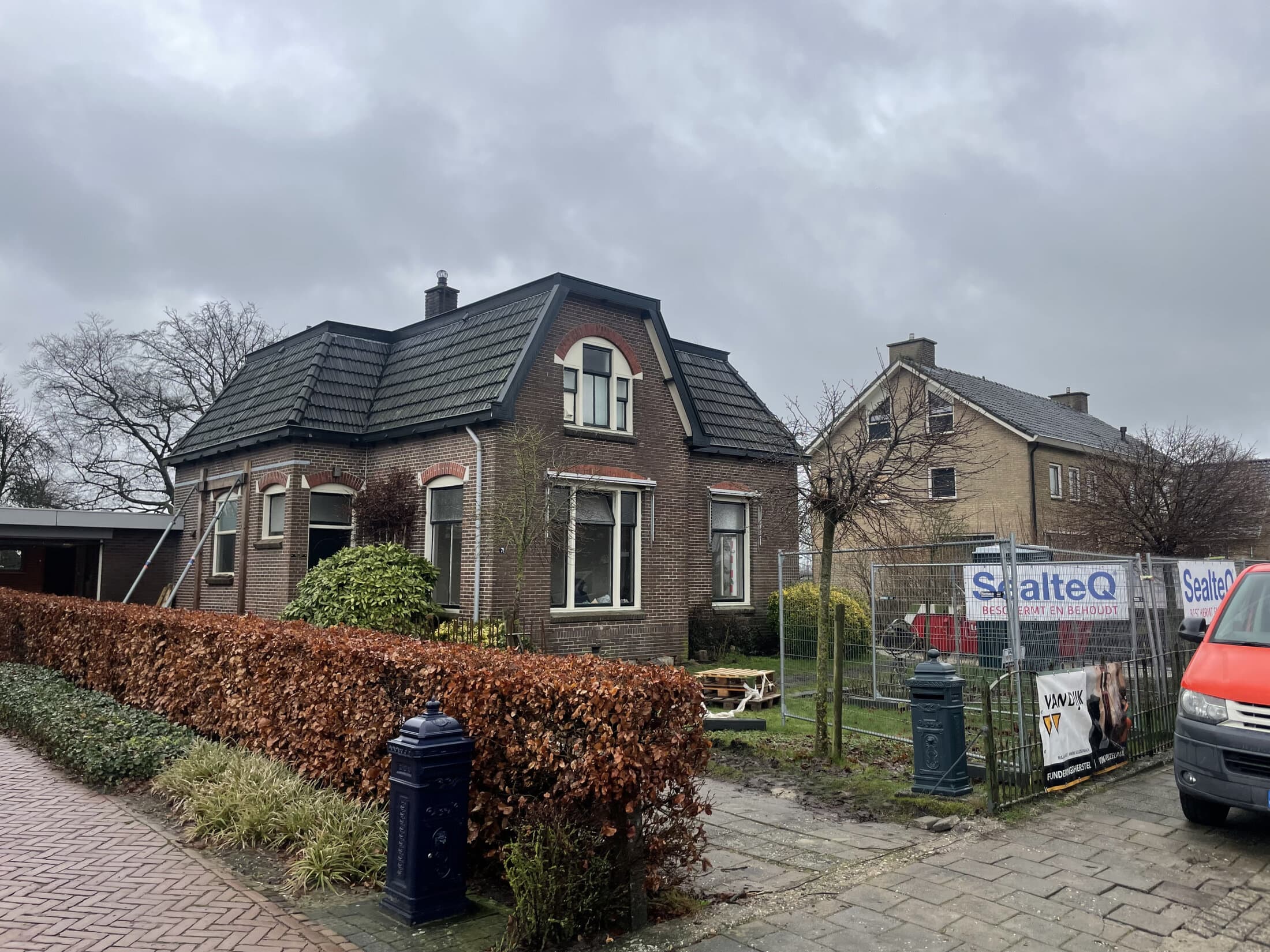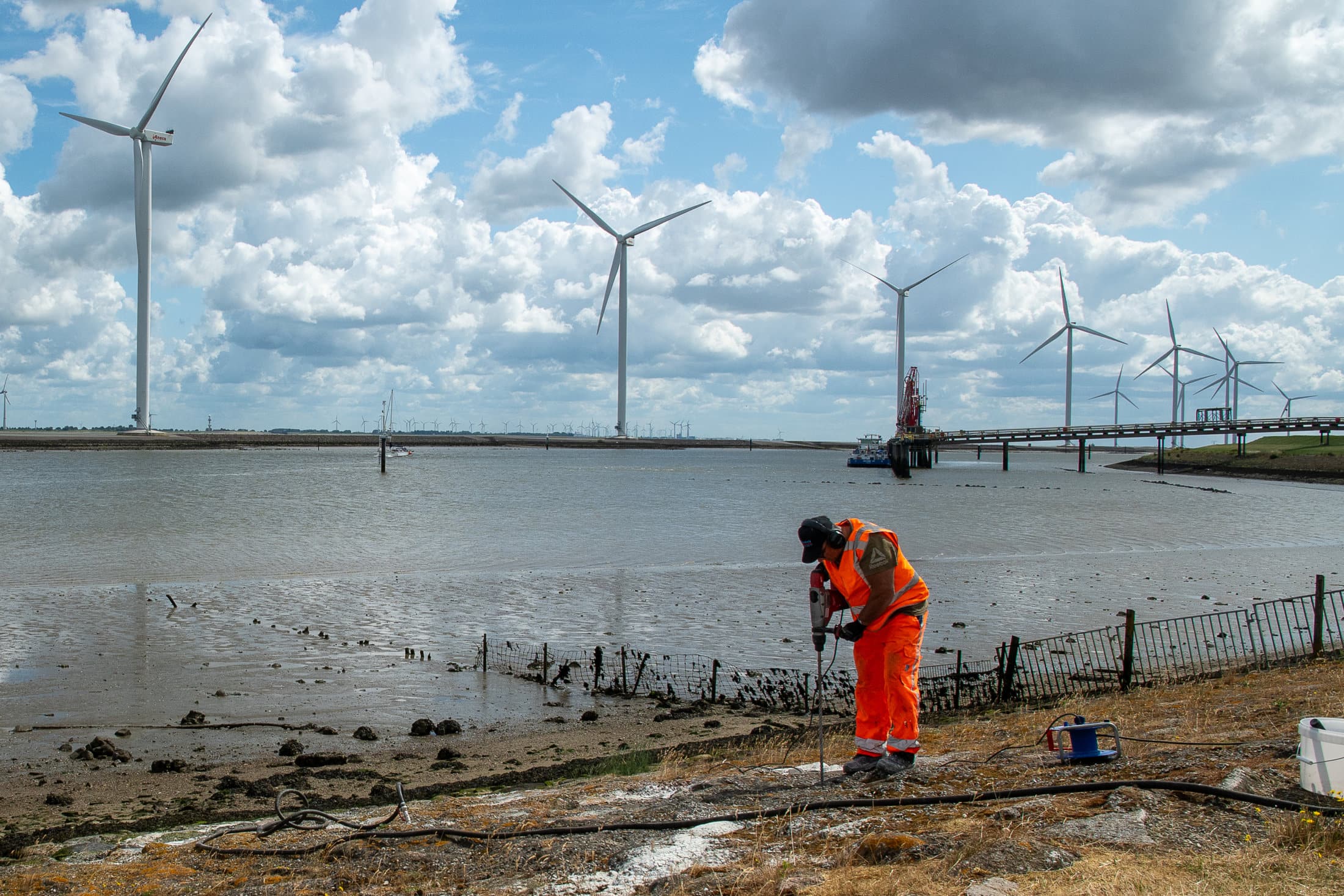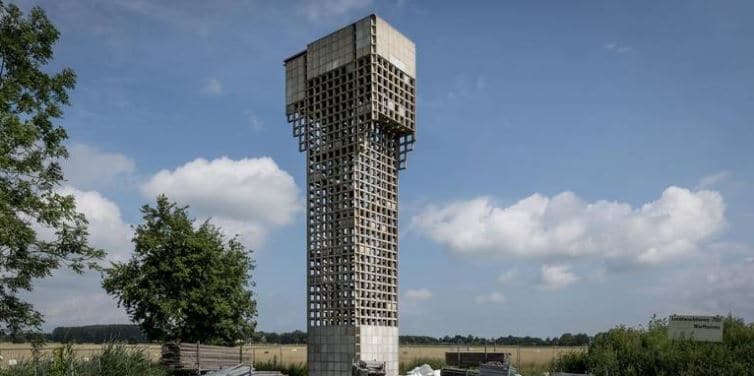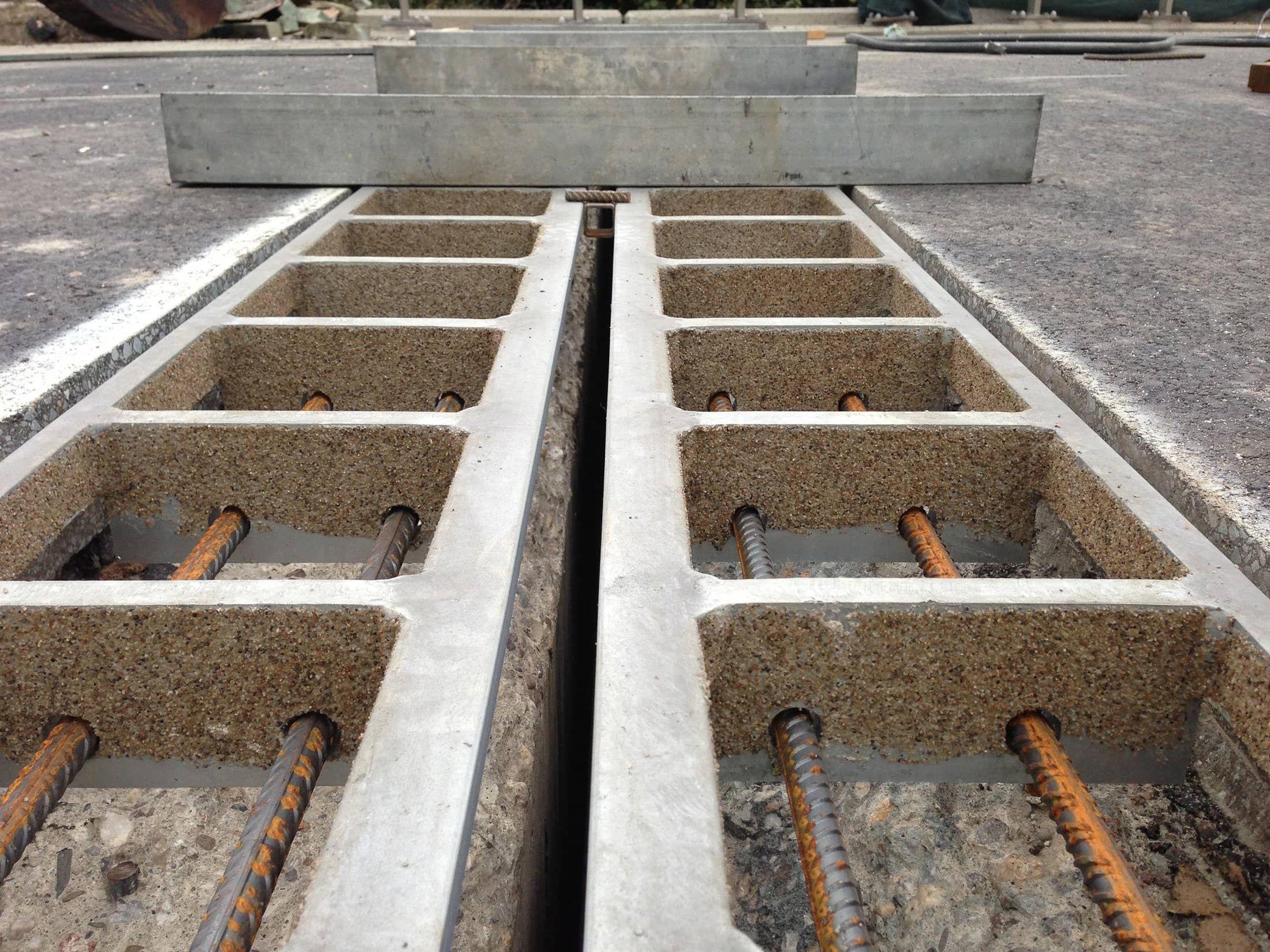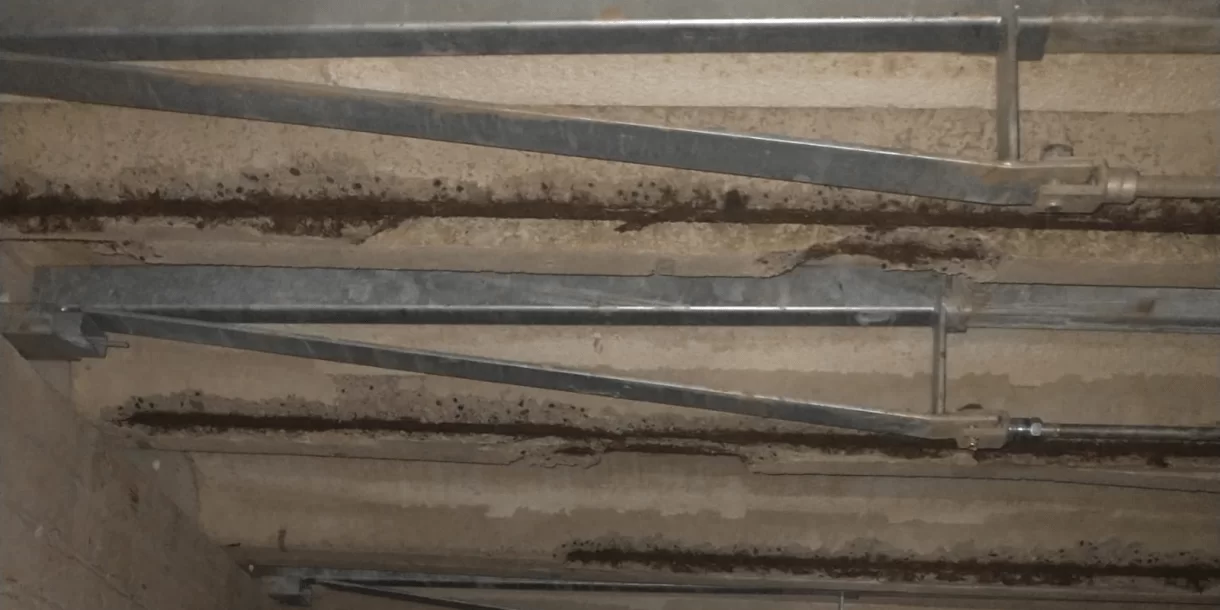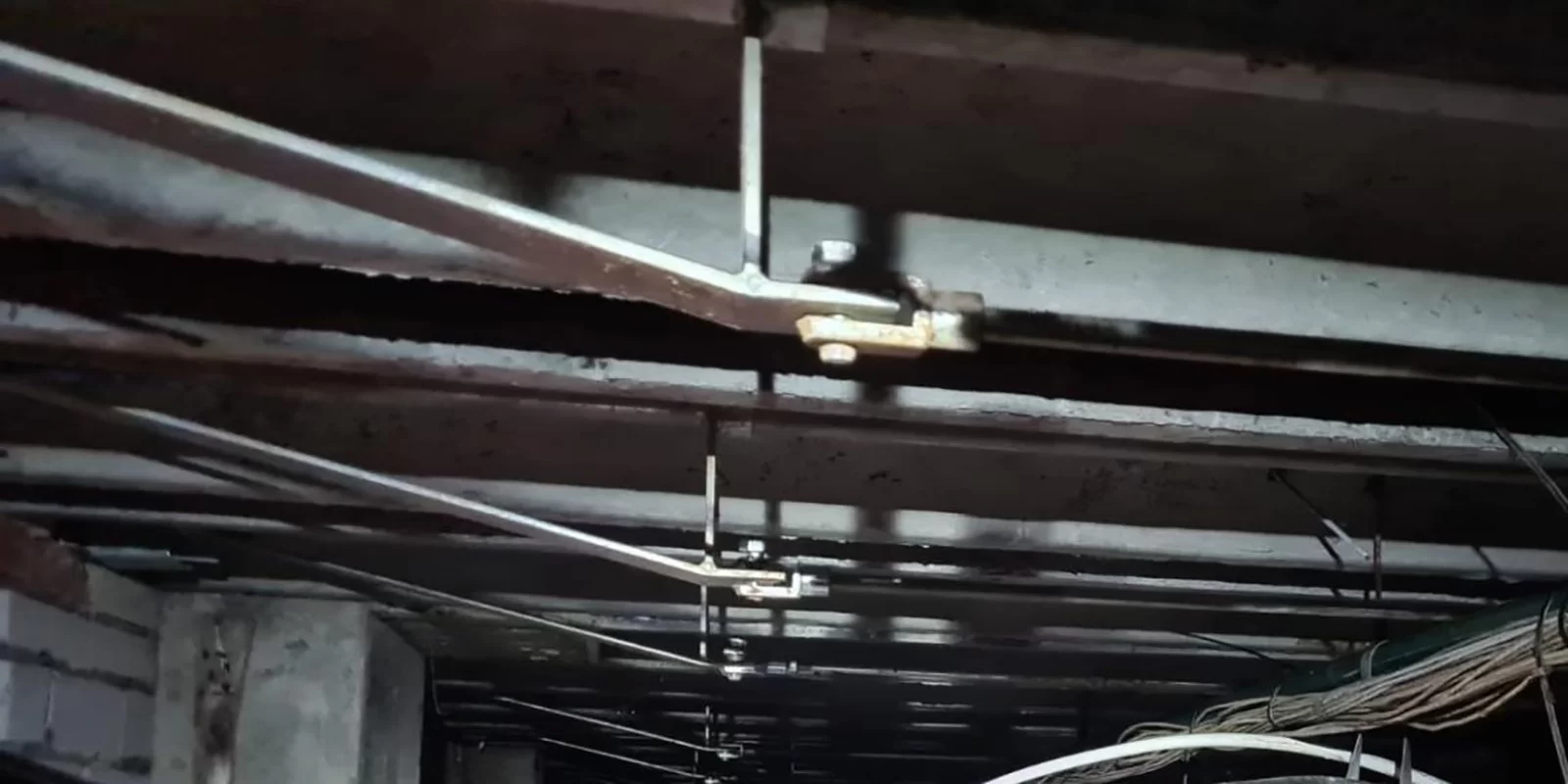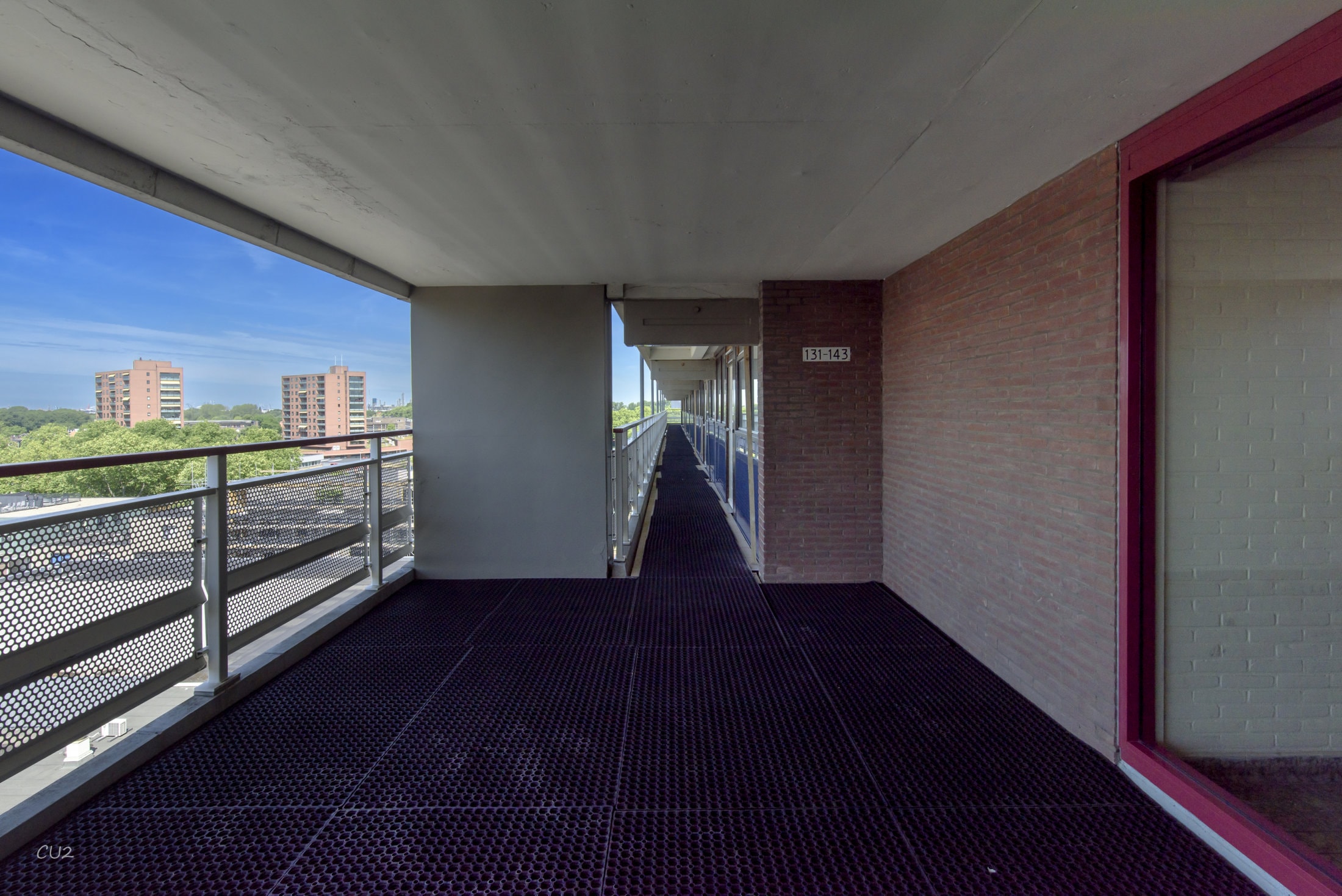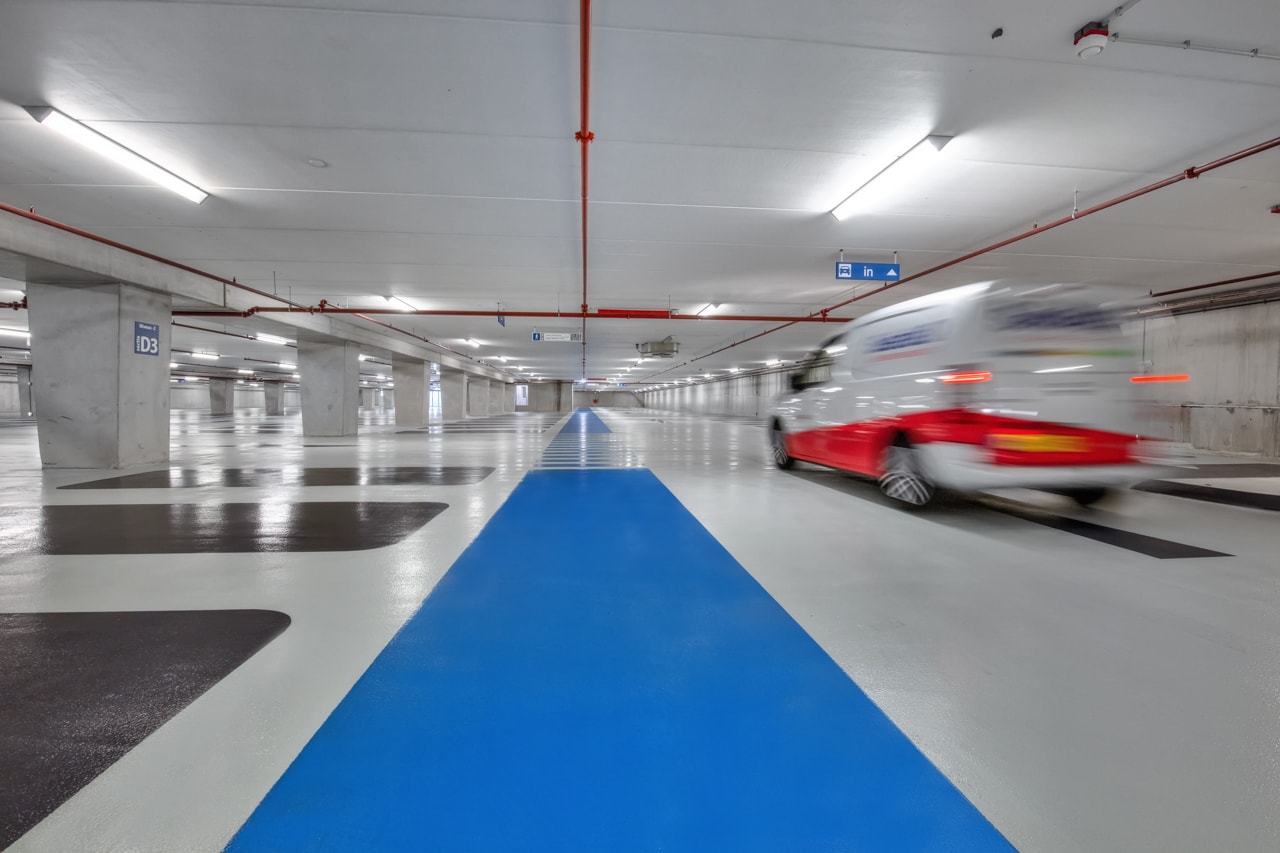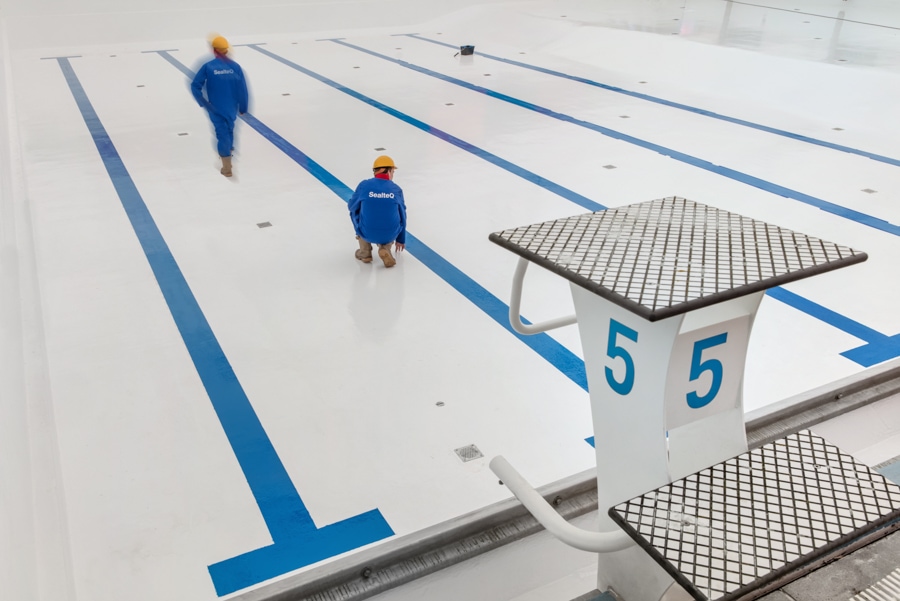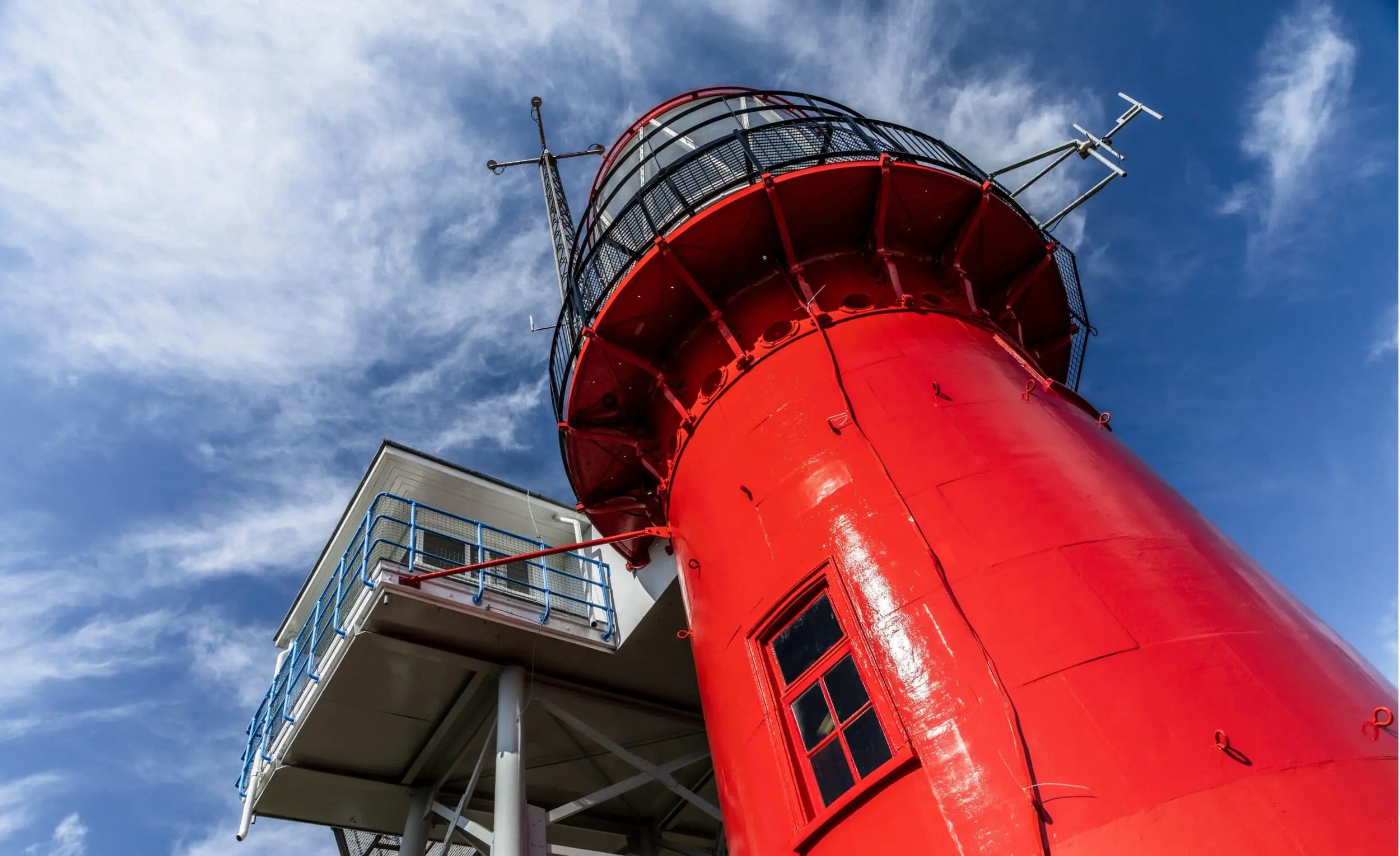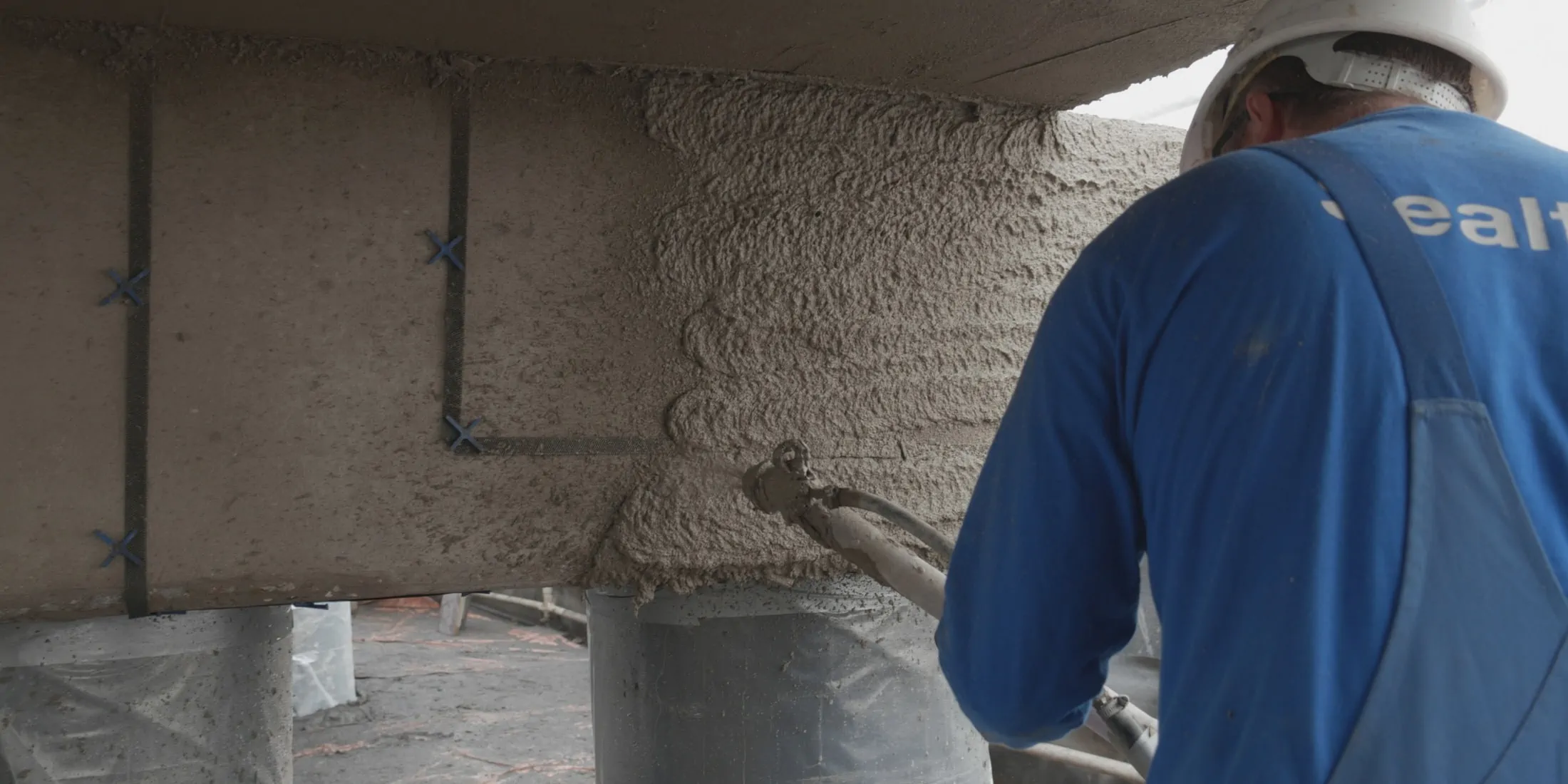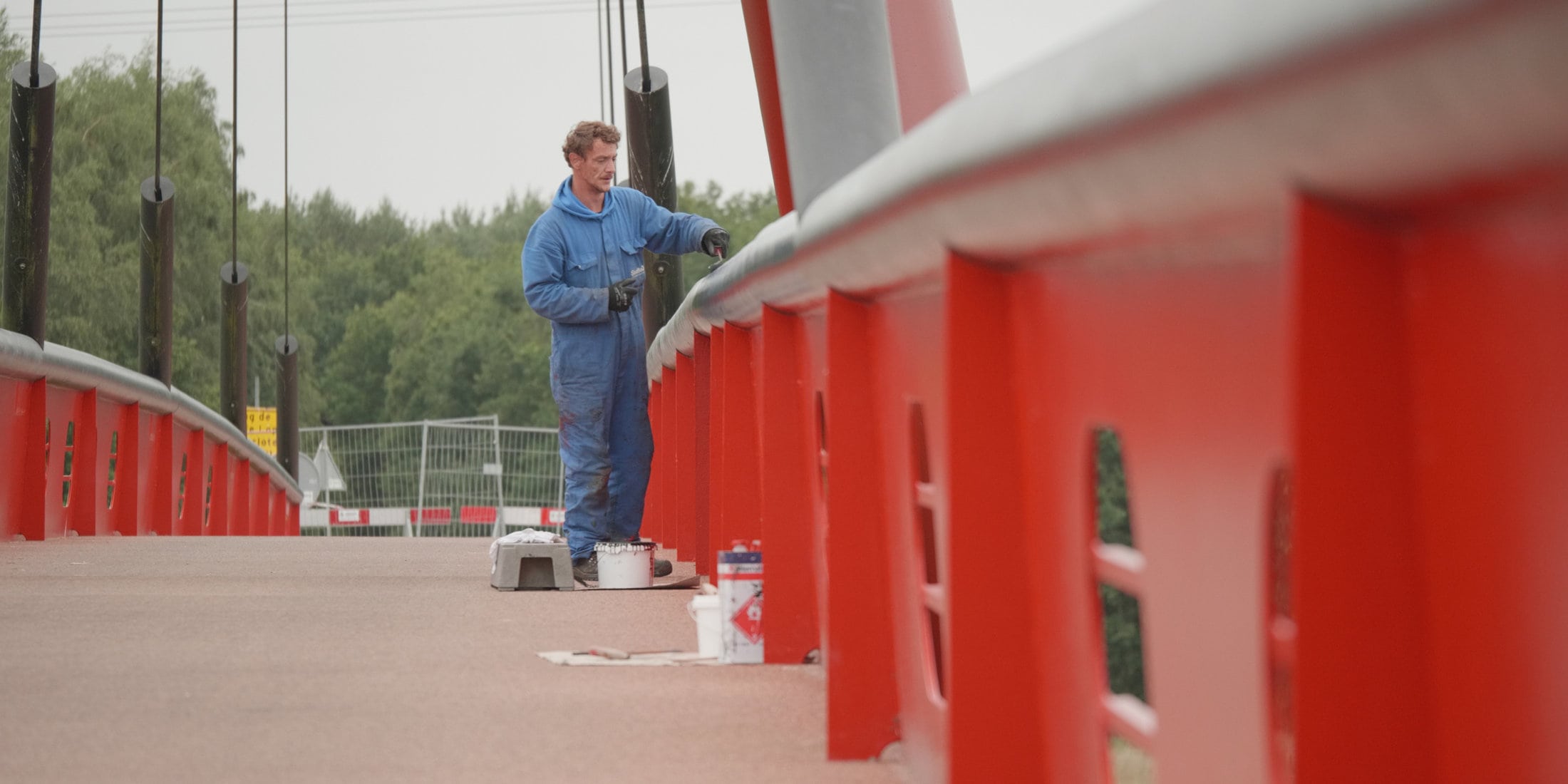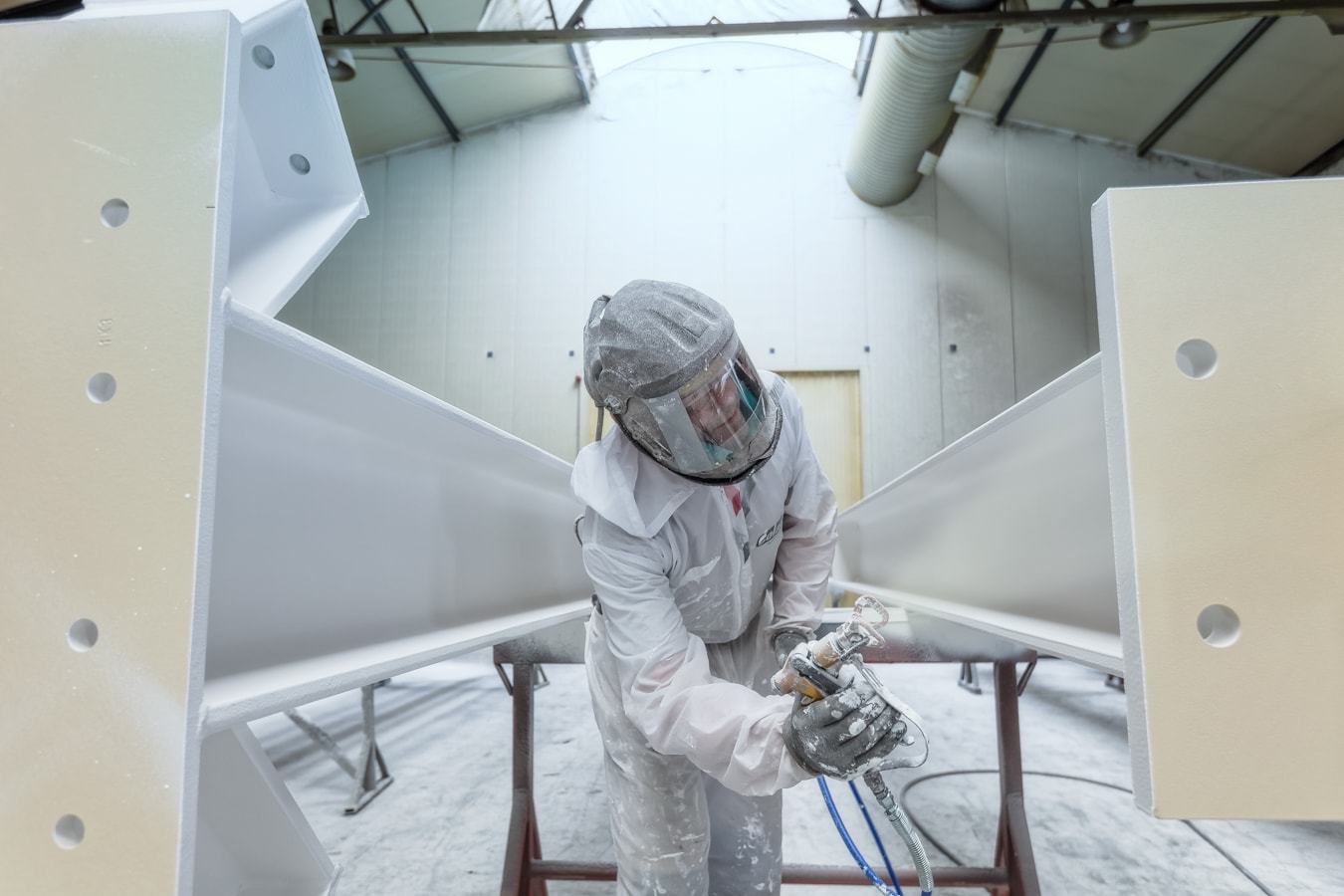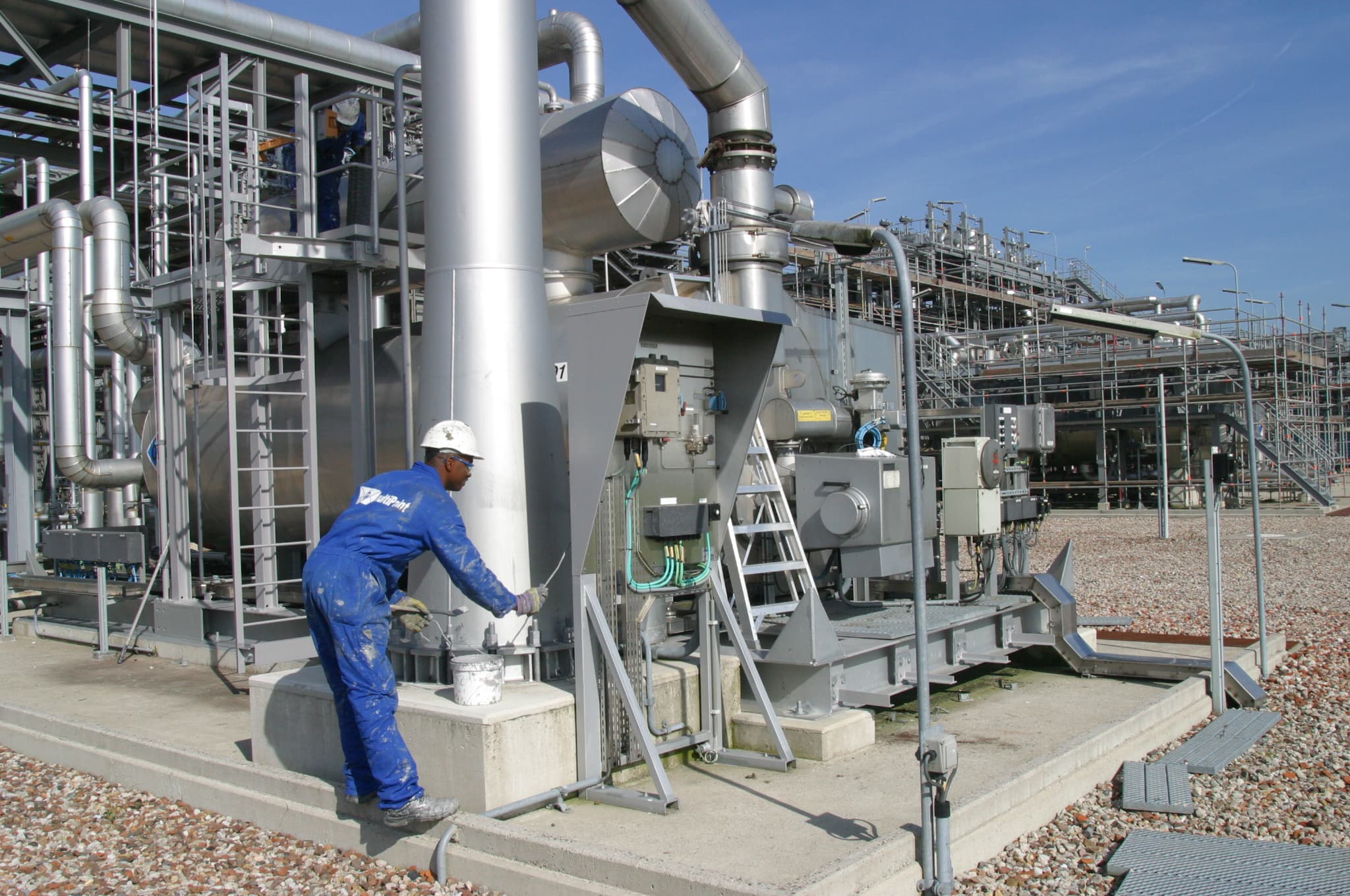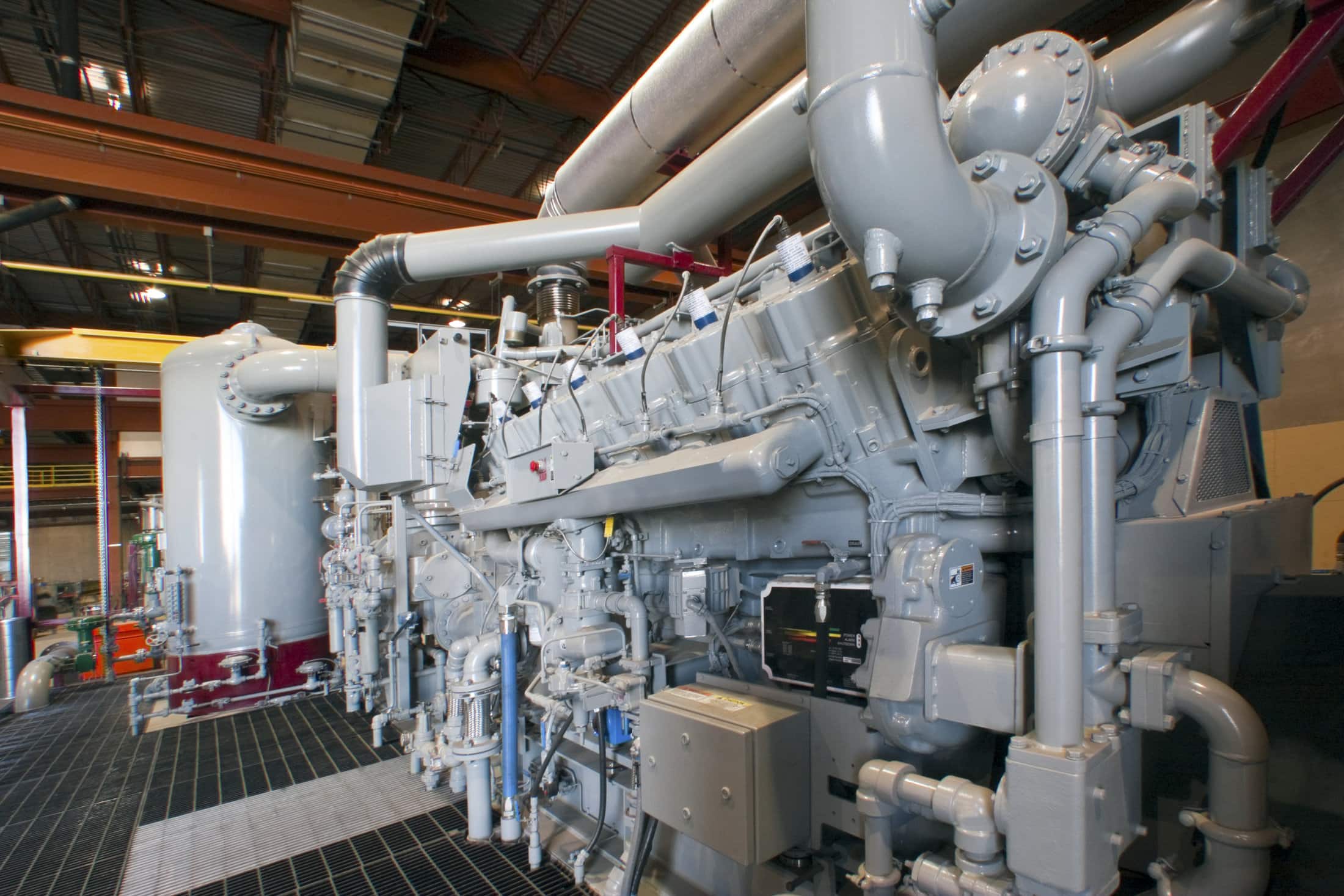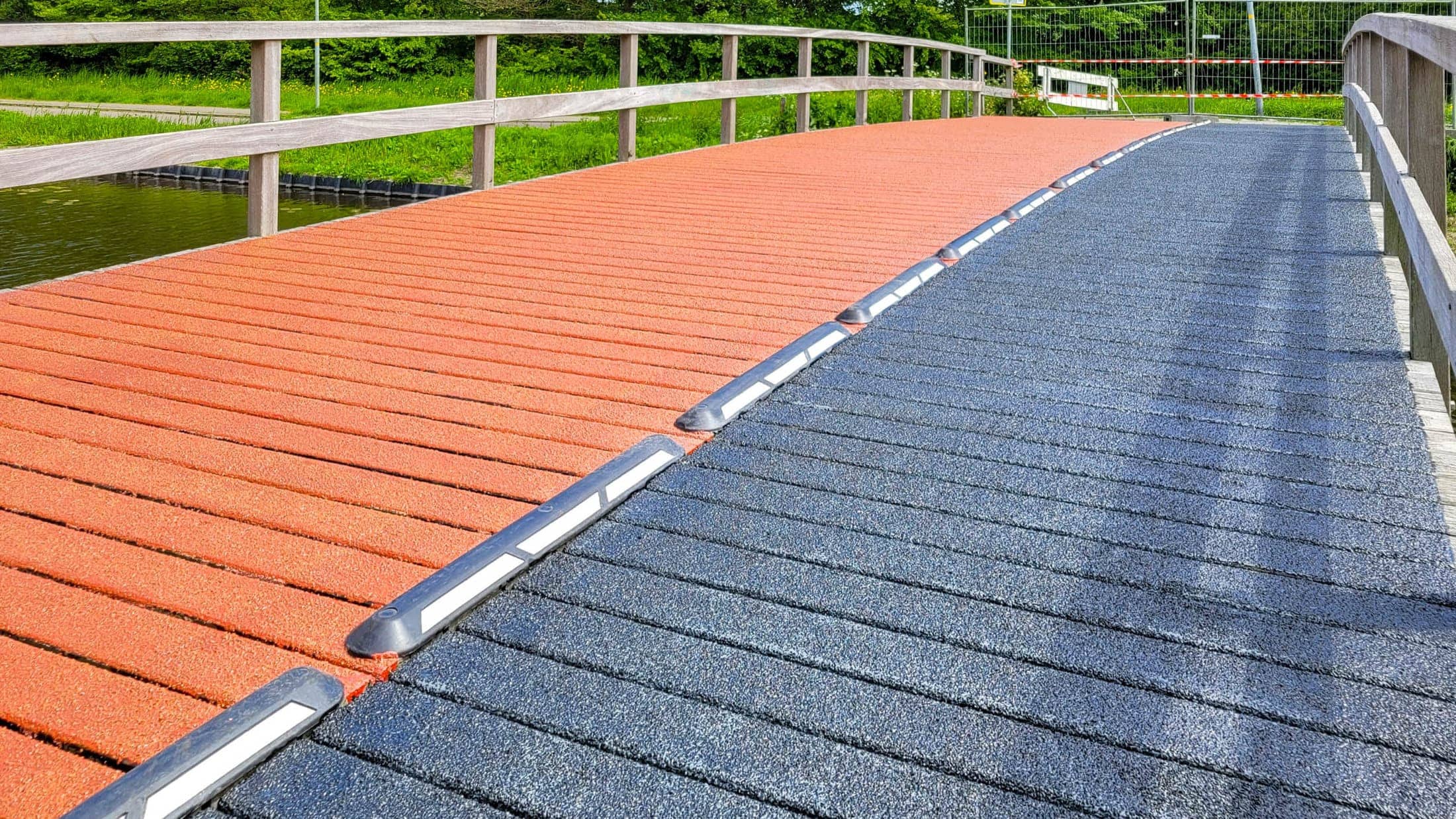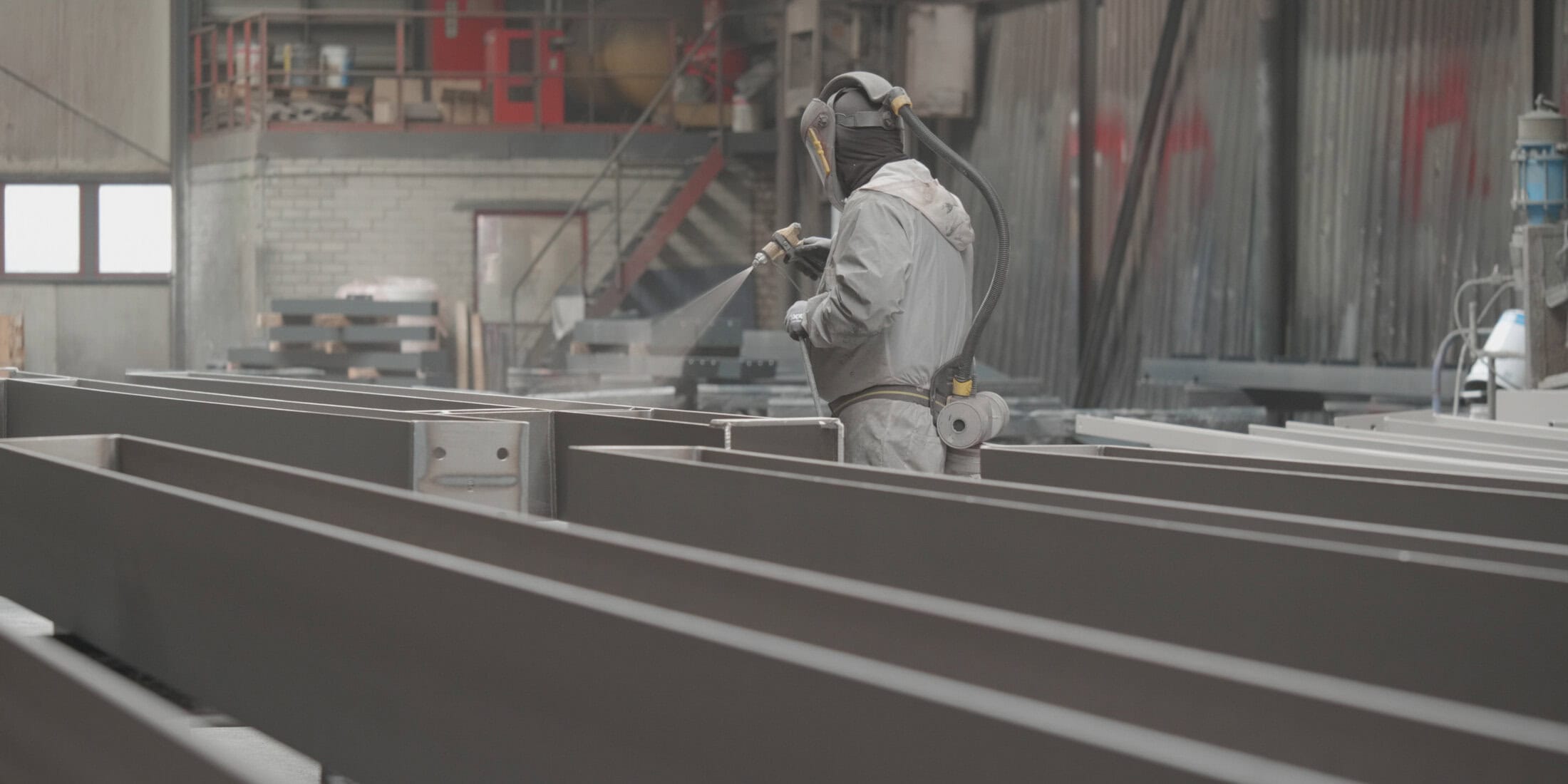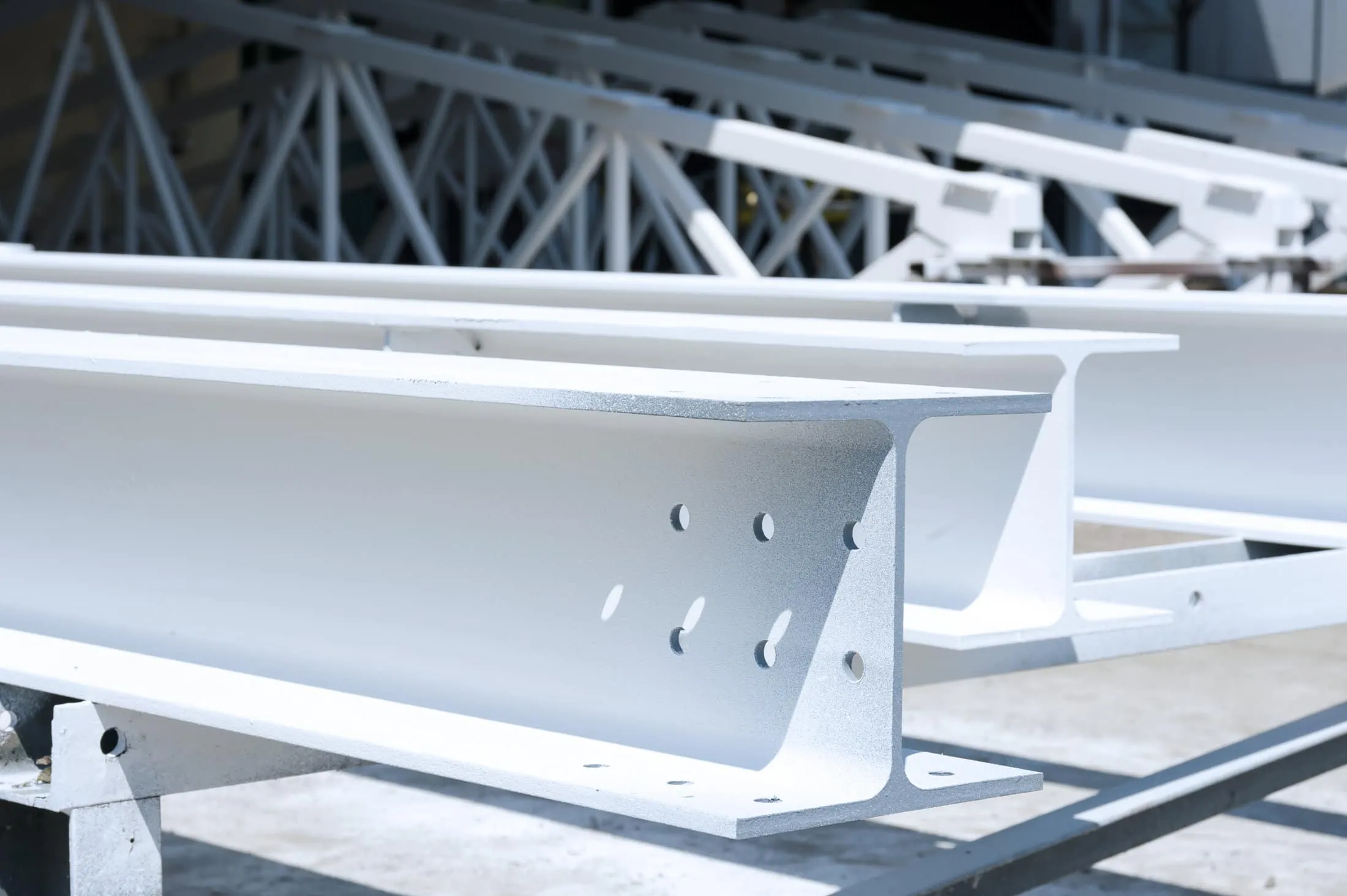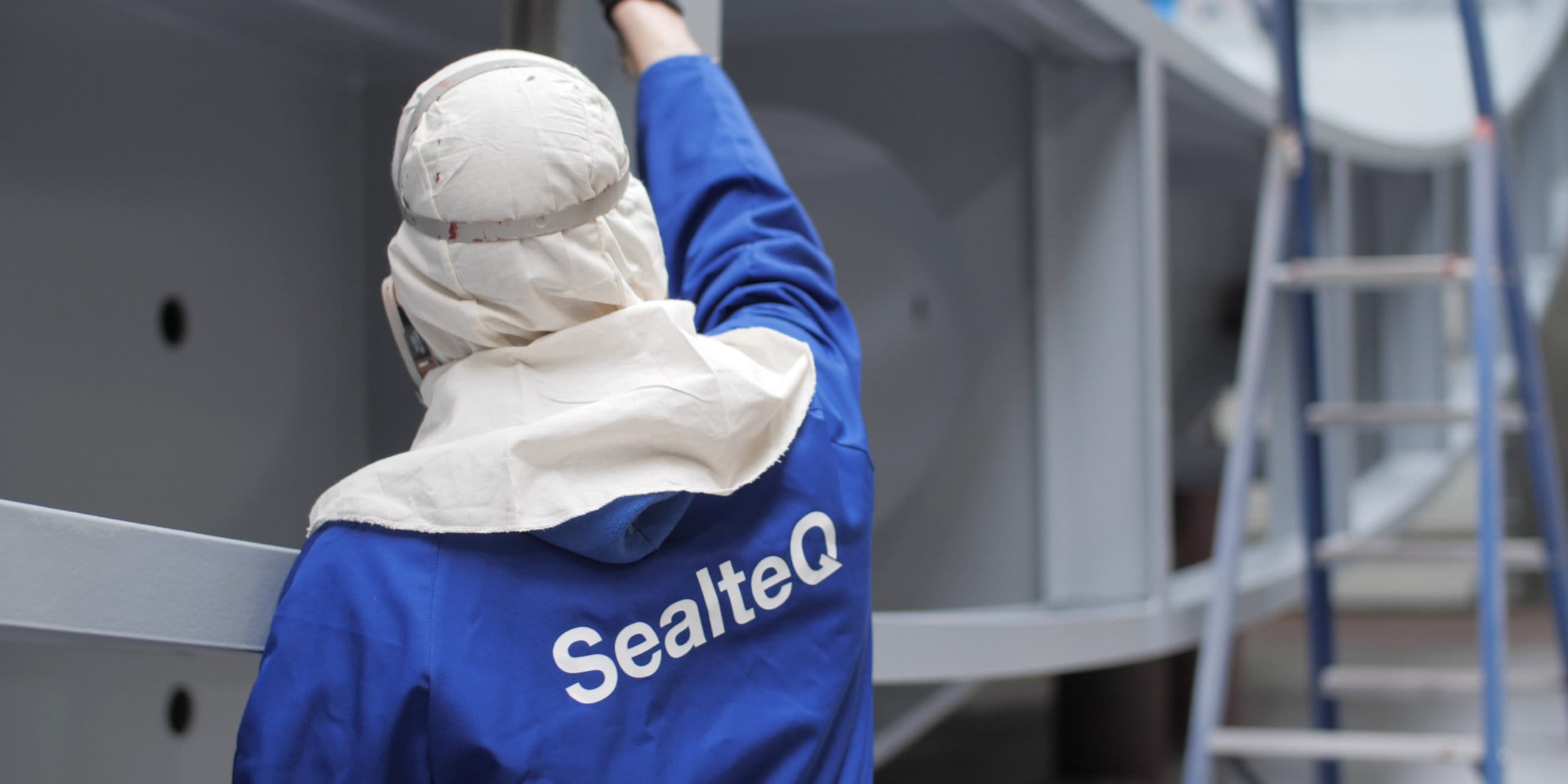Steel structures form the backbone of many industrial, infrastructural and public buildings. To protect the structures sustainably against external influences, a well-thought-out surface treatment of steel is important. In this article, you can read about the treatment options available, how to make the right choice and what SealteQ can do for you in this regard.
Steel surface treatment: methods, applications and benefits
What is steel surface treatment?
Steel surface treatment is a collective term for techniques that protect the steel surface against external influences. This includes rust formation, oxidation, chemical attack and mechanical wear. By treating steel in the right way, you significantly extend the lifespan of structures and prevent high maintenance costs or even premature replacement.
A different approach is needed for each type of steel – whether it concerns structural steel, cast steel or stainless steel (RVS). The correct treatment depends on the application, environmental load and desired aesthetics. A well-chosen surface treatment contributes to the sustainability, safety and appearance of your steel structure.
Purpose of surface treatment
Treating steel is more than an aesthetic choice. It has several functional purposes, such as:
- Corrosion protection: Protection against moisture, salt, chemicals and other corrosive influences.
- Extension of lifespan: Preservation of strength, shape and functionality.
- Adhesion of coatings: A well-prepared surface ensures optimum adhesion of paint layers and coatings.
- Resistance to load: Improvement of mechanical and chemical resistance.
- Compliance with regulations: Conformity to standards such as ISO 12944, REACH and RoHS.
What types of surface treatments are there for steel?
There are different types of surface treatments for steel. Below you can read about the types of surface treatments available and which type is suitable in which situation.
Galvanizing
- Hot-dip galvanizing vs. electrolytic galvanizing: Hot-dip galvanizing provides a thick protective zinc layer through immersion. Electrolytic galvanizing results in a thinner, smooth layer, ideal for finer applications.
- Duplex system: This combines galvanizing with a powder coating for double protection.
- Zinc layer, zinc thickness and protection duration: These factors determine the effectiveness and maintenance frequency.
Coating Systems
Powder coating
: Available in epoxy or polyester variants, for a durable and aesthetic finish.- Wet paints: Suitable for complex shapes and as a maintenance solution.
- KTL coating and electrophoretic deposition: For even coverage, even in hollow spaces.
- Environmentally friendly coatings: Chrome-VI free systems and low-VOC solutions are on the rise.
Mechanical and Chemical Pre-Treatment
- Degreasing, pickling and passivating: For a clean, reactive surface.
- Blasting: Sandblasting, glass bead blasting or shot peening to optimize roughness and adhesion.
- Adhesion promotion: Use of primers or silanization to allow coatings to adhere for a long time.
Alternative Techniques
- Anodizing and chrome plating: Widely used for non-ferrous metals, but sometimes also for special applications in the steel industry.
- Zinc phosphating and zinc-nickel coatings: As pre-treatment or functional layer.
- Organic vs. inorganic coatings: Depending on the load and desired finish.
When do you choose which surface treatment?
| Treatment method | Characteristics | When to choose? |
| Hot-dip galvanizing | Thick, robust zinc layer by immersion | For outdoor structures with severe weather conditions (e.g. bridges, fences) |
| Electrolytic galvanizing | Thinner, smooth layer via electrolysis | For aesthetic applications or indoor applications with low corrosion risks |
| Powder coating | Dry coating, applied electrostatically | For colorful finish, high impact resistance, in combination with galvanizing |
| Wet paint | Liquid paint, suitable for complex shapes | For recoating, maintenance or specific color and gloss requirements |
| KTL coating | Cathodic dip coating (electrophoretic deposition) | For hollow products and mass industry such as automotive |
| Zinc phosphating | Base layer for better adhesion of paints | As pre-treatment before painting or powder coating |
| Pickling & passivating | Removal of oxides + passive protective layer | For stainless steel structures after welding or machining |
| Blasting (sand/glass bead) | Mechanical cleaning and roughening of the surface | As pre-treatment for better adhesion of coatings |
| Chrome-VI free coating | Environmentally friendly alternative to traditional coatings | For projects with environmental requirements or REACH requirements |
How do you choose the right treatment?
The choice for a specific surface treatment of steel depends on several factors:
- Application: For example, bridge parts, facade systems or industrial installations.
- Environmental load: Consider marine climate, urban pollution or industrial fumes (corrosion classes C3 to C5).
- Maintenance frequency: How often may or can the construction be maintained?
- Sustainability: Which solution offers the longest protection duration with the least maintenance?
- Cost efficiency: What is the ratio between initial investment and lifespan (TCO)?
Our specialists are happy to help you make this assessment.
Steel surface treatment at SealteQ
SealteQ delivers complete steel preservation, both on location and in our specialized workshops. We take care of the entire process: from surface cleaning to advanced coating techniques.
Our Range of Services
Our range of services includes mobile blasting, including dust-free sponge-jet blasting – an efficient and environmentally friendly way to pre-treat surfaces. We also offer metallizing, the application of single- or multi-layer coating systems, and fire-retardant coatings (30, 60 or 90 minutes). Also solvent-free coatings with hot-spray equipment and the application of wrapping tapes such as Stopaq or Kebu are among our possibilities. Finally, SealteQ also removes chrome 6 from paint layers of structures, so that they no longer pose a risk to the health of people and the environment.
For projects with high corrosion loads, we apply Thermal Sprayed Aluminum (TSA): a self-healing aluminum layer that is ideally suited for applications with minimal maintenance margins. All our work is carried out by NACE-certified specialists and recorded in extensive quality reports with accompanying guarantee certificates.
On-site steel preservation
In addition to our permanent facilities in Bergharen and Bergum – equipped with spray halls, spray booths and blasting booths – we have a complete mobile fleet of machinery. This allows us to carry out preservation work at any desired location. This includes mobile blasting units, metallizing equipment, spraying equipment, extraction units (with integrated lighting and communication), dust screen solutions and own units.
This combination of craftsmanship, technology and mobility enables us to switch flexibly and quickly and at the same time guarantee a high quality standard. In this way, we offer sustainable protection and relieve clients in sectors such as infrastructure, industry and commercial construction.
Frequently asked questions about surface treatment of steel
What is the Difference between Hot-Dip Galvanizing and Electrolytic Galvanizing?
Hot-dip galvanizing provides a thicker protection, while electrolytic galvanizing is more aesthetic but less robust.
How Long Does a Coating Last?
It varies from 5 to 25 years, depending on the type of coating, layer thickness, and environment.
Is Surface Treatment Environmentally Friendly?
An increasing number of coating systems are chromium-VI free and comply with REACH and RoHS directives.
Can Steel be Welded or Processed after Treatment?
In many cases this is possible, but depending on the chosen treatment, post-treatment may be required.
Which Standards are Applicable?
Among others, ISO 12944 for corrosion protection and various environmental standards (REACH, RoHS).
Is Stainless Steel Always Maintenance-Free?
No. Although stainless steel is more resistant to corrosion, it can still become contaminated or corrode under unfavorable conditions.
Contact us for an inspection or advice
Are you curious about the possibilities for surface treatment of your steel structures? Our specialists are ready to provide you with a free consultation or inspection report. Contact us to schedule an on-site appointment.


